
Our Products
CONVEYOR SYSTEM
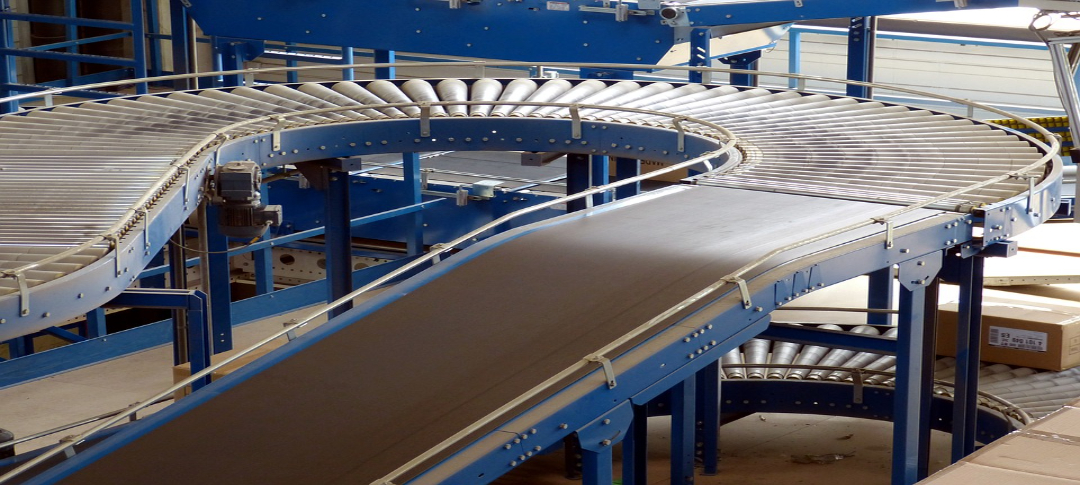
Partner with Fetronix for Your Conveyor Needs
With Fetronix as your conveyor solutions provider, you can enhance
your material handling processes, improve operational efficiency, and
elevate your productivity. Our commitment to excellence, customized
solutions, and reliable support make us the ideal partner for
businesses across a wide range of industries.
Contact us today to discuss your conveyor requirements, and let us
help you find the perfect solution for your business
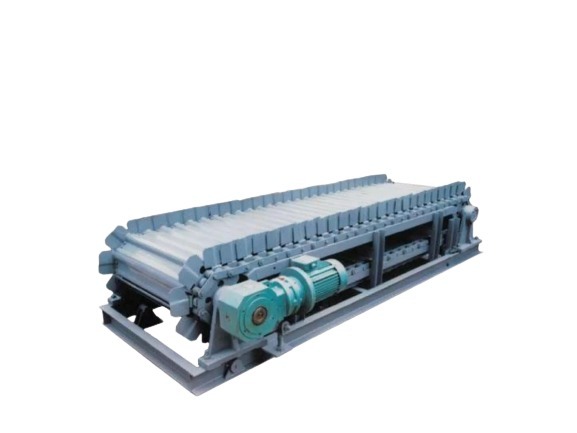
Apron Conveyor
An apron conveyor, also known as an apron feeder, is a type of mechanical conveyor system commonly used in industrial settings to transport bulk materials. It consists of a series of overlapping metal plates, known as aprons, that are connected to a central chain or belt.

Belt Conveyor
A belt conveyor is a mechanical system that utilizes a continuous belt to transport materials or products from one location to another. It is one of the most widely used conveyor systems in various industries, including manufacturing, logistics, mining, agriculture, and more.
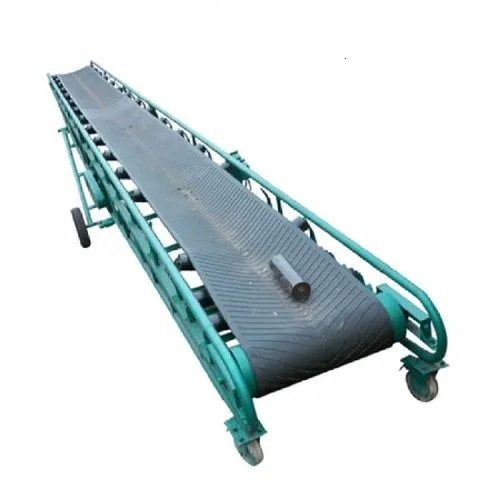
Horizontal Belt Conveyor
A horizontal belt conveyor is a type of belt conveyor system that is designed to transport materials or products horizontally along a straight path. Horizontal belt conveyors are versatile and can handle a wide range of materials, from small and lightweight items to large and heavy loads. One key advantage of a horizontal belt conveyor is its ability to efficiently transport materials or products over long distances. They can be used in straight sections or combined with curves to navigate around obstacles or fit within space constraints. Horizontal belt conveyors can also be integrated with other conveyor systems or equipment to create complete material handling systems.
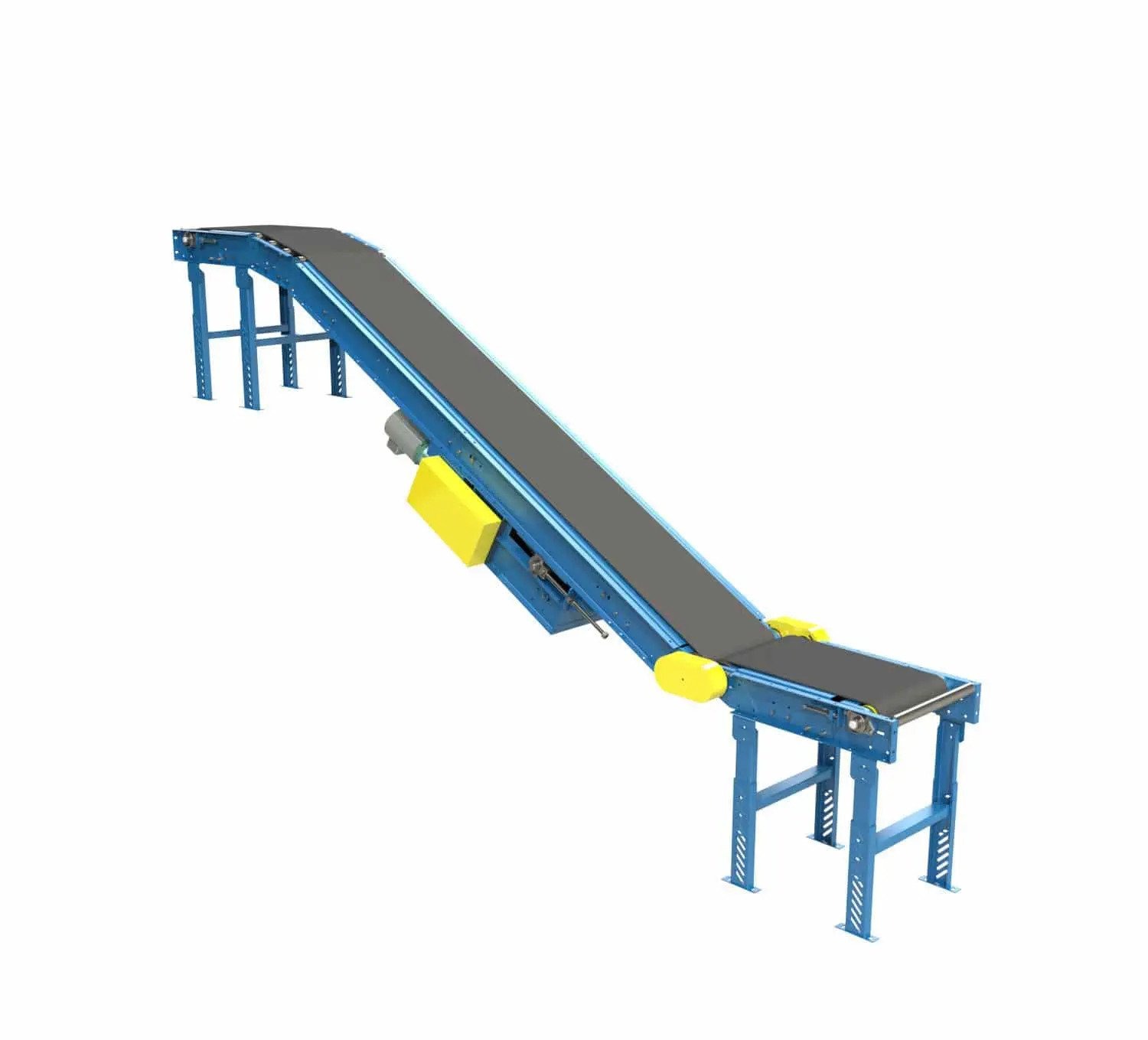
Inclined Belt Conveyor
An inclined belt conveyor, also known as an incline conveyor or a conveyor with an incline, is a type of belt conveyor system that is designed to transport materials or products between different elevations or levels. Unlike a horizontal belt conveyor that moves materials along a straight path, an inclined belt conveyor is inclined at an angle to facilitate the vertical movement of goods.

Inspection Conveyor
An inspection conveyor, also known as an inspection belt or inspection table, is a type of conveyor system specifically designed for the visual inspection of products or materials during manufacturing or processing. It provides a controlled and well-lit environment for operators or automated systems to inspect items for quality control, sorting, or other purposes.
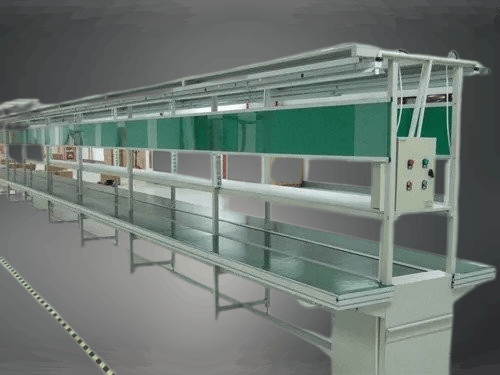
Assembly Line Belt Conveyor
An assembly line conveyor is a type of conveyor system that is specifically designed for use in assembly line processes. It plays a critical role in facilitating the efficient movement of components or products along the production line, enabling workers or automated systems to perform assembly tasks in a systematic and organized manner.-in ovens are larger in size and cater to a wider range of industrial applications.
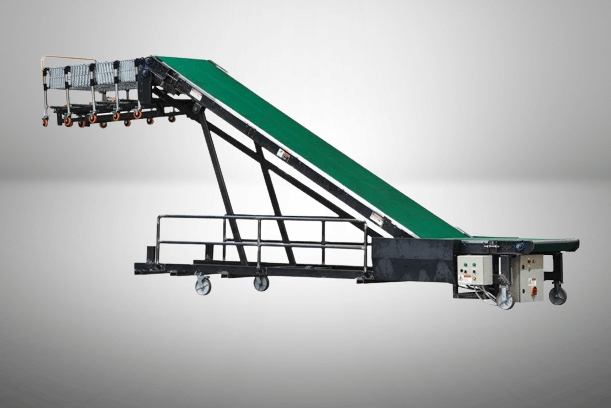
Loading/Unloading Conveyors
A loading/unloading conveyor, also known as a loading/unloading system or a loading/unloading dock, is a type of conveyor system specifically designed for the efficient transfer of goods or materials between a transportation vehicle (such as a truck or a container) and a warehouse, facility, or another area. The primary purpose of a loading/unloading conveyor is to facilitate the safe and efficient loading and unloading of cargo or materials from transportation vehicles.

Roller Conveyor
A roller conveyor is a type of conveyor system that uses a series of rotating cylindrical rollers to transport goods or materials from one location to another. Roller conveyors can handle a wide range of materials, including boxes, cartons, pallets, and even irregularly shaped items. The rotating rollers provide a smooth and continuous movement, allowing for efficient transportation of goods. Roller conveyors can be designed with accumulation zones where goods can temporarily stop without disrupting the overall flow of the conveyor system. Roller conveyors can be combined with curves, merges, diverts, or other conveyor types to create complex material handling systems tailored to specific operational requirements.
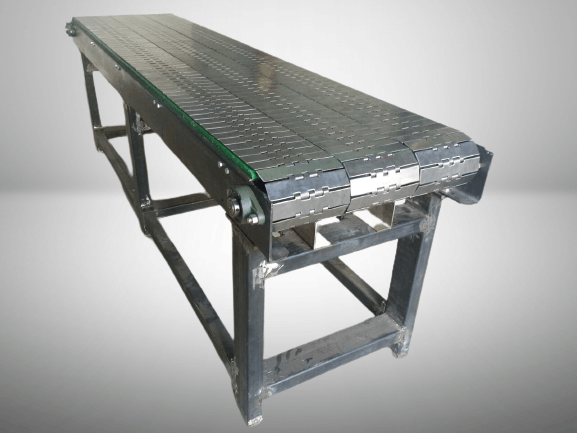
Chain Conveyor
A chain conveyor is a type of conveyor system that utilizes a continuous chain as the conveying medium to transport goods or materials from one location to another. Durability: Chain conveyors are robust and can handle heavy loads and withstand harsh operating conditions. Chain conveyors can be designed to accommodate different layouts, including straight sections, curves, inclines, and declines, to suit specific space requirements and production processes. Chain conveyors can handle a wide range of materials, from small components to large and heavy items. Chain conveyors can be designed with accumulation zones or indexing systems to control the flow and accumulation of products along the conveyor line. Chain conveyors can be customized with various features and accessories, such as side guides, guide rails, or attachments, to meet specific application needs.
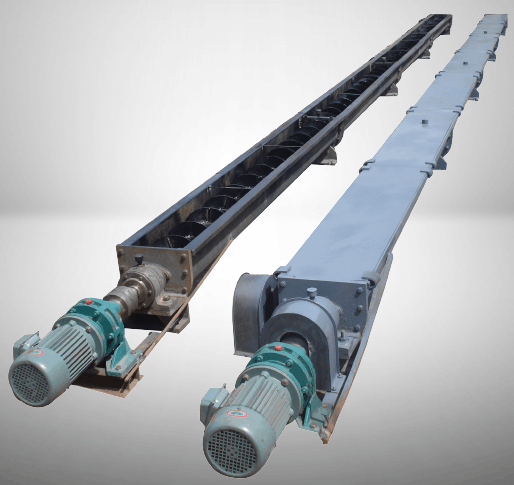
Screw Conveyor
A screw conveyor is a type of conveyor system that uses a rotating helical screw blade, known as a "flight" to move materials or products along a tube or trough. Versatility: Screw conveyors can handle a wide range of materials, including powders, granular materials, flakes, and sticky substances.The rotating screw provides a gentle and controlled movement of materials, making screw conveyors suitable for fragile or sensitive products.Screw conveyors have a relatively compact footprint and can be easily integrated into existing production lines or equipment.Screw conveyors are often a cost-effective solution for material handling, requiring low maintenance and operating costs.Screw conveyors can be customized with different screw designs, lengths, and diameters to meet specific application requirements.

Slat Chain Conveyor
A slat chain conveyor, also known as a slat conveyor or slat band conveyor, is a type of conveyor system that uses flat slats or plates linked together with chains to transport goods or materials. The use of robust slats and chains ensures the conveyor's ability to handle heavy loads and withstand demanding industrial environments.Slat chain conveyors can be designed to follow straight lines, curves, or inclines, making them adaptable to different floor layouts and production requirements.The flat, solid slats provide a stable surface for transporting goods or materials, ensuring minimal product damage and smooth conveying. Slat chain conveyors can handle a wide range of products, including bottles, cans, boxes, components, and more, making them suitable for various industries and applications. Slats and chains are easily replaceable if damaged or worn, simplifying maintenance and reducing downtime.
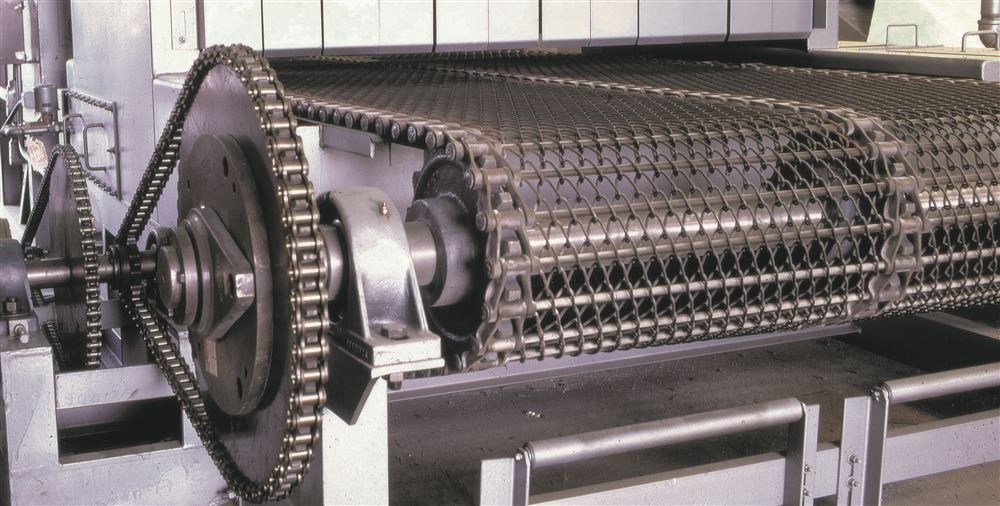
Wire Mesh Conveyor
A wire mesh conveyor, also known as a wire belt conveyor or wire mesh belt conveyor, is a type of conveyor system that utilizes a continuous belt made of interconnected metal wires to transport goods or materials. The metal wires used in the belt provide excellent strength and durability, allowing the conveyor to handle heavy loads and withstand harsh operating conditions. Wire mesh belts are suitable for applications involving high or low temperatures, as they can withstand heat treatment processes or be used in freezers or cooling areas. The open structure of the wire mesh belt allows for easy cleaning, as debris can fall through the belt. It also facilitates visual inspection and maintenance of the conveyor. The textured surface of the wire mesh belt provides good grip and prevents product slippage during transportation. Wire mesh conveyors are suitable for various products, including small components, bulk materials, or items that require cooling, drying, or drainage during the conveying process.
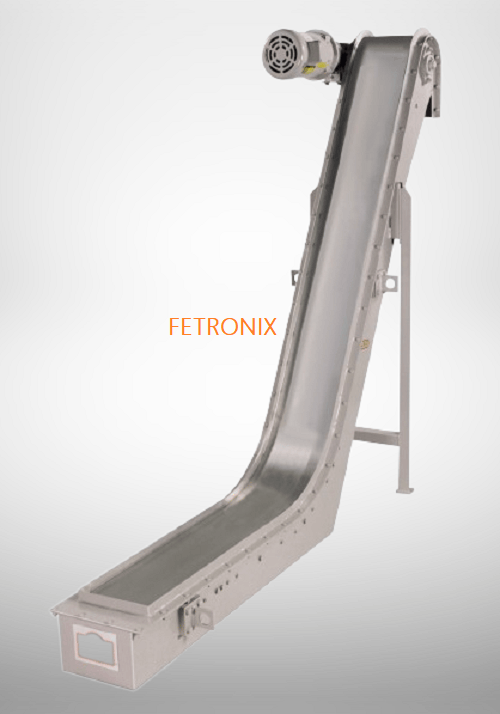
Magnetic Conveyor
A magnetic conveyor, also known as a magnetic belt conveyor or magnetic slide conveyor, is a type of conveyor system that uses magnets to transport ferrous materials or objects along a conveyor path. The magnetic conveyor utilizes a continuous belt or slide surface with embedded magnets or magnetic strips. These magnets create a magnetic field that attracts and holds ferrous materials securely to the belt or slide surface. As the belt or slide moves, the magnetic force propels the materials along the conveyor path.
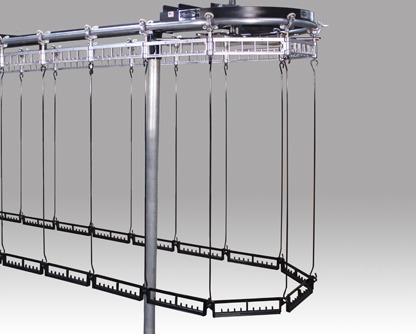
Double Decker Conveyor
A double decker conveyor, also known as a two-tier conveyor or dual-level conveyor, is a type of conveyor system that consists of two separate conveyor levels stacked on top of each other. It is designed to increase the capacity and efficiency of material handling operations by utilizing the vertical space and creating multiple conveying levels. Double decker conveyors are commonly used in scenarios where space optimization and increased throughput are essential. They are often employed in operations involving sorting, order fulfillment, cross-docking, and multi-level material handling.
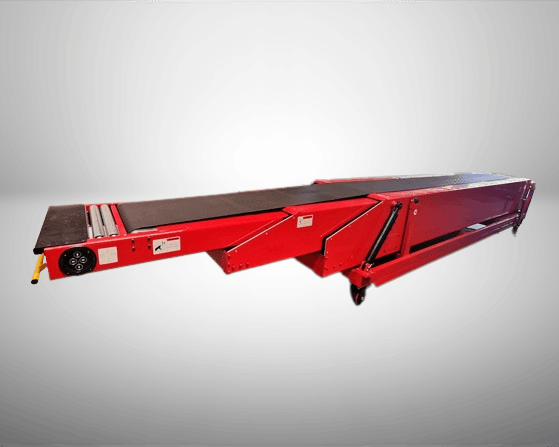
Telescopic Conveyor
A telescopic conveyor, also known as a telescoping conveyor or extendable conveyor, is a type of conveyor system that can be extended or contracted in length to adjust to different loading and unloading requirements. It is commonly used in applications where flexibility and adaptability are needed.
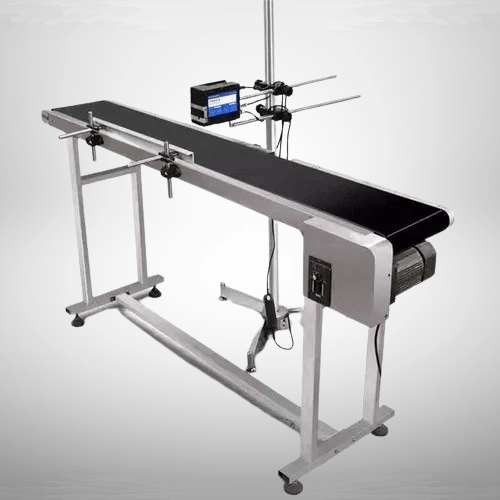
Printer Conveyor
A printer conveyor is a type of conveyor system that is specifically designed for transporting printed materials, such as paper sheets, documents, or other printed media. It is commonly used in printing and finishing operations, where printed materials need to be moved from one location to another for further processing or packaging. Printer conveyors can be combined with other conveyor types or integrated into larger printing and finishing systems to create a complete material handling solution. They are often used in conjunction with other equipment, such as printers, collators, folders, or binders, to streamline the printing process.
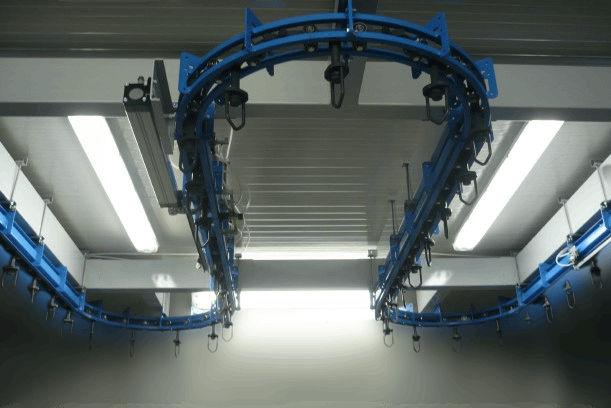
I Beam Conveyor
An I-beam conveyor, also known as an I-beam overhead conveyor or I-beam monorail conveyor, is a type of conveyor system that utilizes an I-shaped beam as the track or rail for carrying and transporting loads. The sturdy I-beam track provides excellent strength and load bearing capacity, allowing for the transportation of heavy or bulky items. I-beam conveyors can be designed to follow straight lines, curves, or inclines, enabling flexibility in the layout and configuration of the conveyor system to suit the available space and operational needs. By suspending the conveyor from the ceiling or overhead structure, I-beam conveyors utilize the vertical space in the facility, leaving the floor area unobstructed for other operations or equipment. The simplicity of the I-beam conveyor design makes it relatively easy to maintain. Trolleys or carriers can be easily replaced, and the track can be inspected and repaired if needed.
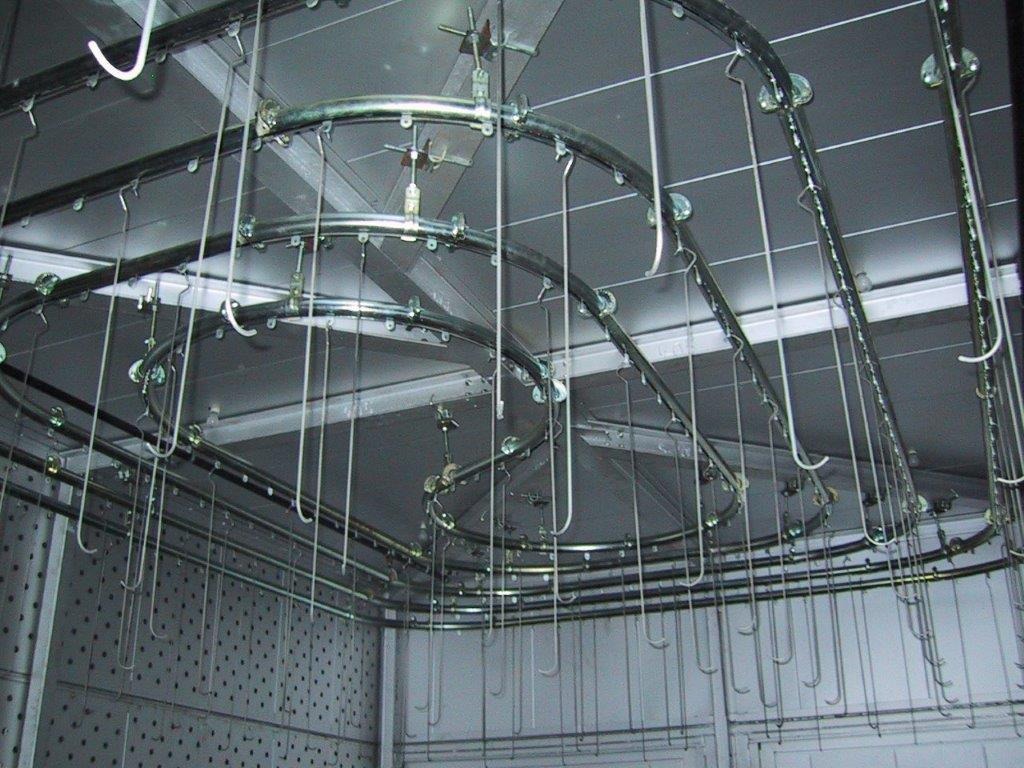
Overhead Conveyor
An overhead conveyor is a type of conveyor system that is designed to transport goods or materials above the ground level using an elevated track or rail system. By utilizing the overhead space, an overhead conveyor system allows for the efficient use of floor space. This is particularly beneficial in facilities where floor space is limited or needs to be kept clear for other operations. Overhead conveyors provide a continuous flow of goods or materials, allowing for seamless and efficient transportation along the predetermined path. This can help streamline production processes and reduce bottlenecks. Overhead conveyors can handle a wide range of products, including various sizes, shapes, and weights. They are suitable for conveying items such as boxes, bags, garments, automotive parts, and more. Overhead conveyors can be designed with flexibility in mind, allowing for customization and adaptability to changing production needs. They can be easily modified or expanded as the requirements of the facility evolve. Overhead conveyors reduce the need for manual handling, which can improve ergonomics and reduce the risk of injuries associated with lifting and carrying heavy items. They also help keep the work area clear of obstructions, enhancing safety in the facility.
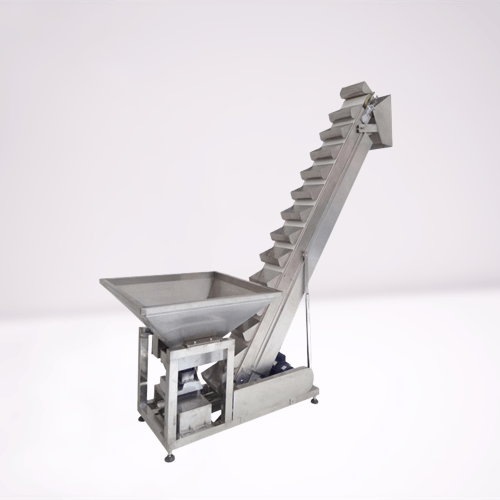
Bucket Conveyor
A bucket conveyor, also known as a bucket elevator or bucket lift, is a type of conveyor system used to vertically elevate or lower materials in bulk. It consists of a series of buckets or cups attached to a belt or chain that move along a vertical or inclined path. Bucket conveyors can be equipped with additional features such as discharge gates, sensors, and safety devices to enhance their functionality and ensure safe operation. It is important to consider factors such as material characteristics, capacity requirements, bucket design, and safety precautions when selecting and designing a bucket conveyor system. Regular maintenance and inspections are necessary to ensure optimal performance and longevity of the equipment.
INDUSTRIAL OVEN
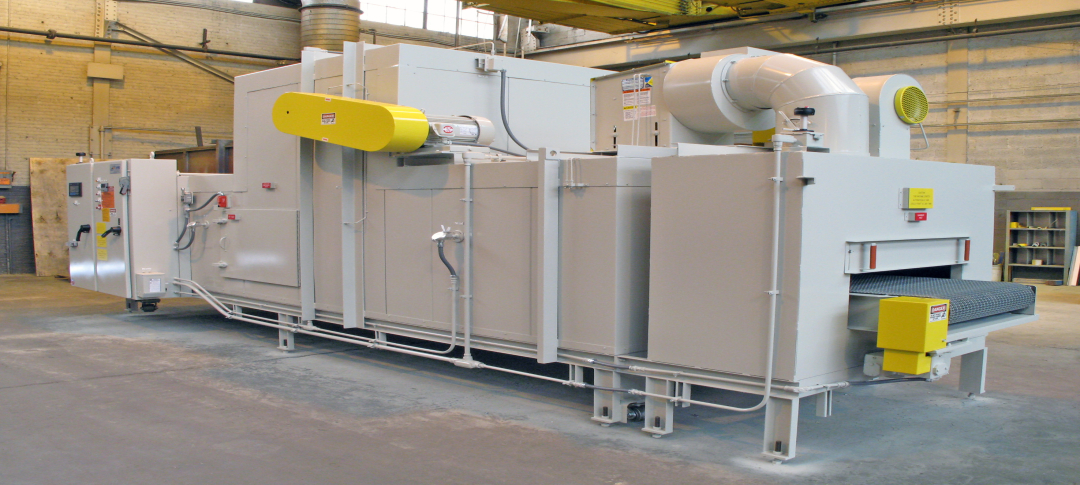
Fetronix - Your Trusted Partner in Industrial Oven Manufacturing
At Fetronix, we are committed to providing high-quality industrial ovens that are designed to
meet the diverse needs of modern industries. With our cutting-edge technology, precision
engineering, and dedication to customer satisfaction.. Whether you require an oven for heat treatment, drying,
curing, or any other industrial application, we have the perfect solution for you.
Contact us today to discuss your needs and let our team assist you in finding the perfect solution.
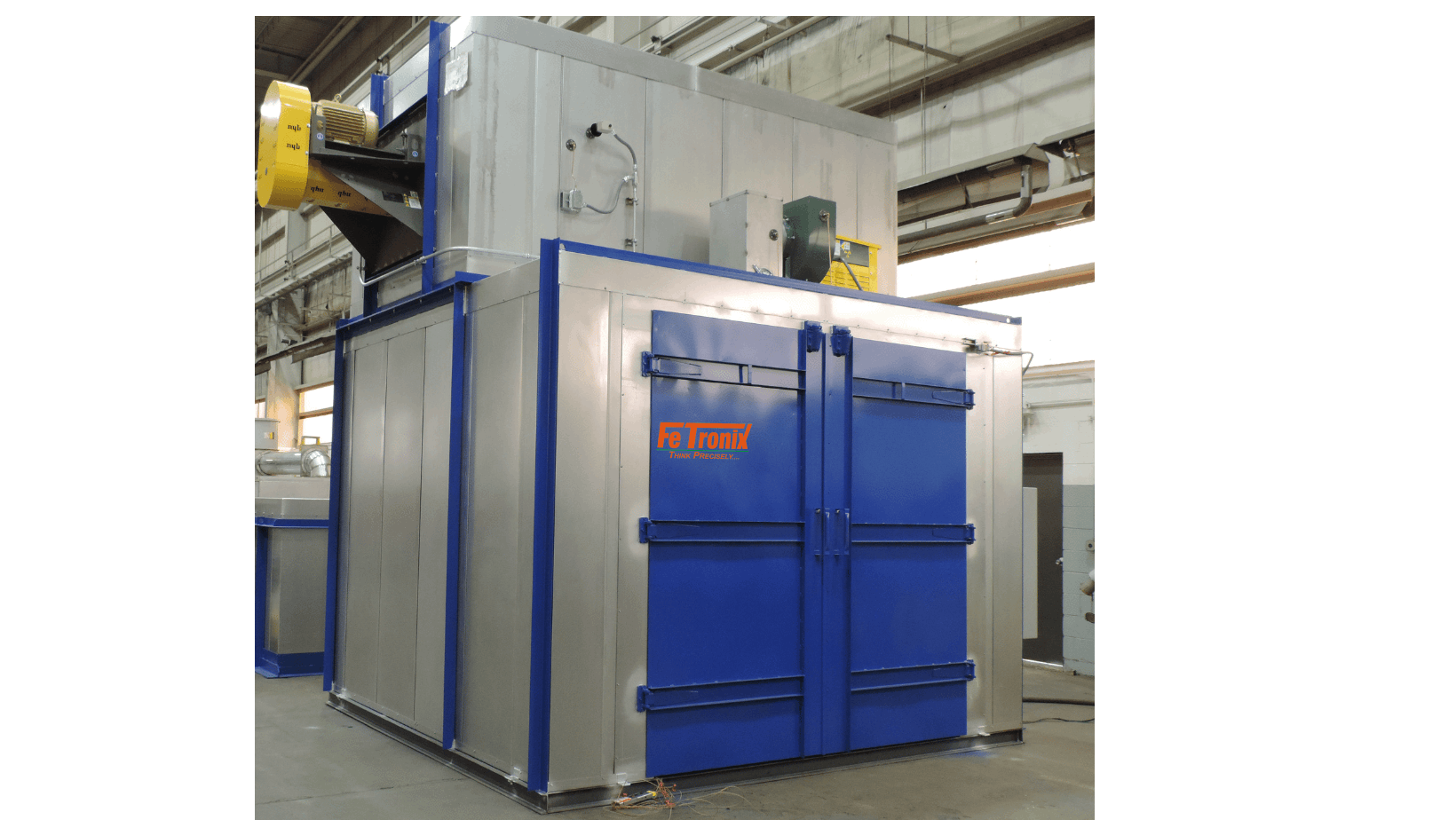
Batch Oven
The Fetronix Batch ovens are specialized furnaces utilized for thermal processing purposes. They find applications in various production and laboratory settings, serving functions such as curing, drying, sterilizing, aging, and other critical processes. The size of these ovens can be customized based on the specific thermal processing requirements. Batch ovens are primarily employed for single-batch thermal processing tasks. Cabinet and bench ovens are smaller in size and suitable for smaller batch operations, while walk-in/drive-in ovens are larger in size and cater to a wider range of industrial applications.
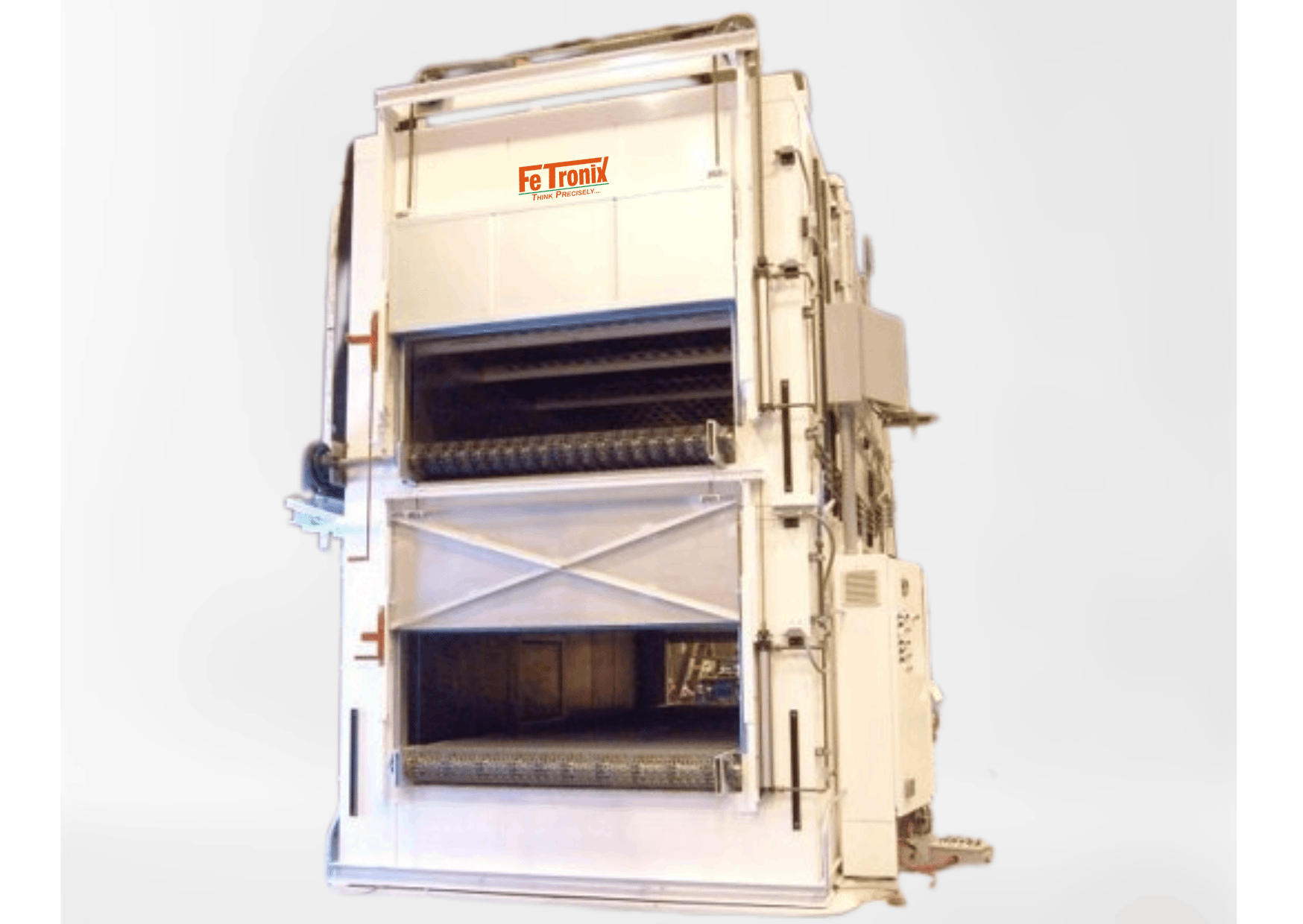
Conveyor Oven
OVEN-The Fetronix industrial conveyor oven is a type of oven specifically designed for industrial applications that involve continuous or batch processing of products on a conveyor belt system. These ovens are commonly used in various industries such as manufacturing, food processing, automotive, electronics, and more.
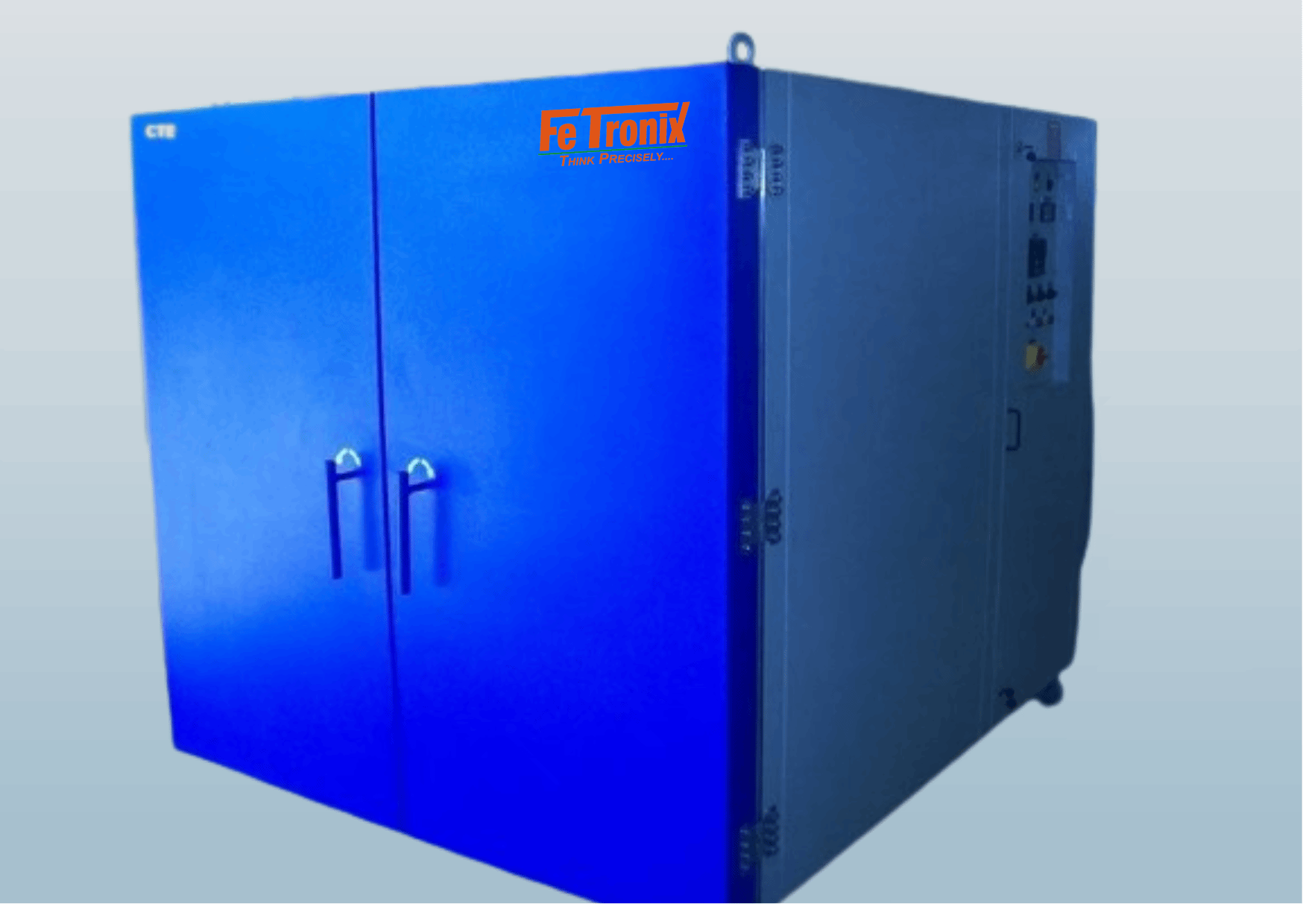
Drying Oven
The Fetronix industrial drying oven is a specialized type of oven used for removing moisture or drying materials in industrial settings. These ovens are commonly used in industries such as manufacturing, food processing, pharmaceuticals, textiles, ceramics, and many others.
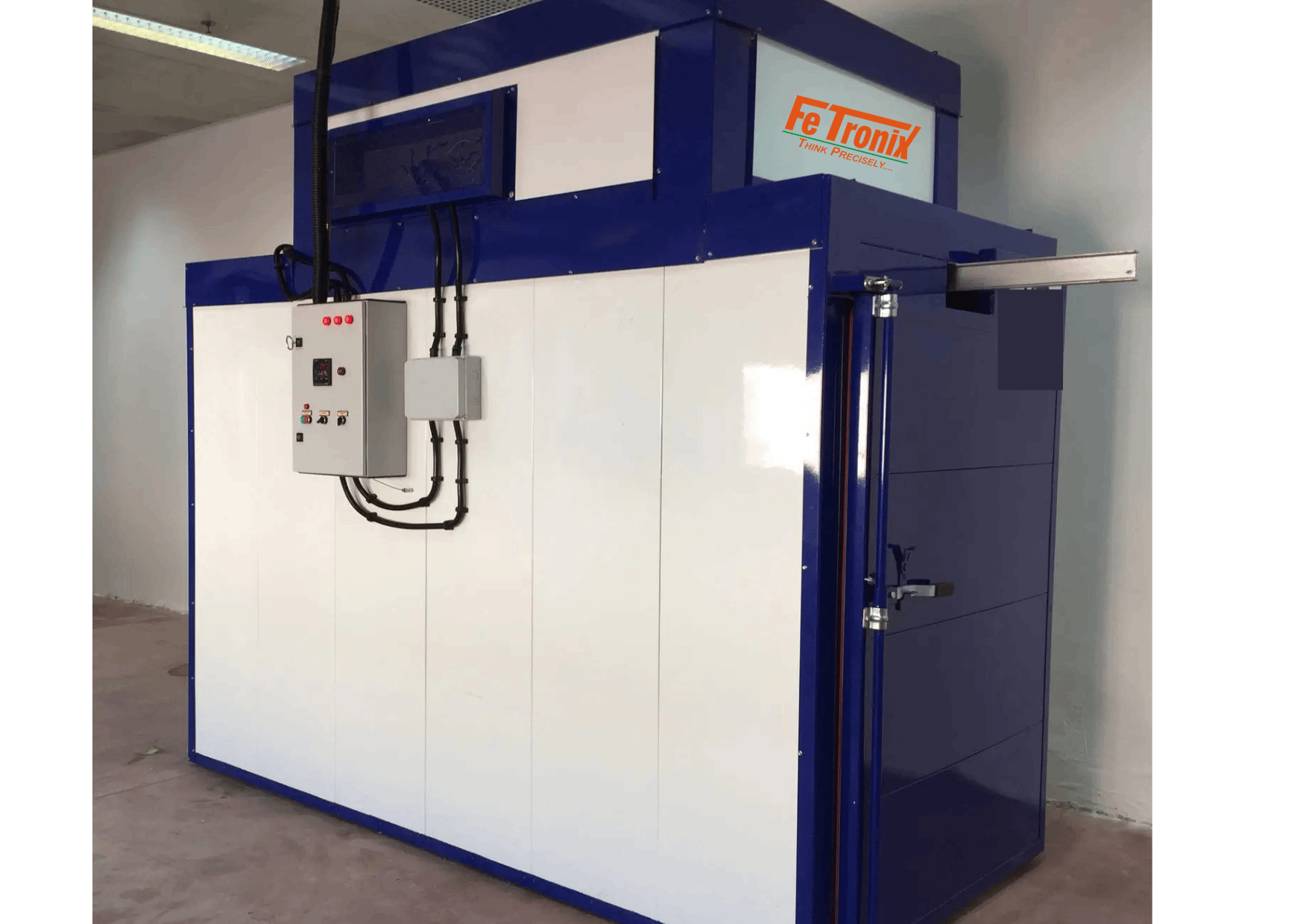
Curing Oven
The Fetronix industrial curing oven is a specialized type of oven used in industrial processes to cure or harden materials through controlled heat and time. Curing refers to the process of creating a chemical or physical change in a material to achieve desired properties such as increased strength, durability, or adhesion. Industrial curing ovens are widely used in industries such as automotive, aerospace, electronics, composites, coatings, and more. They play a crucial role in curing processes such as polymerization, vulcanization, drying, baking, and curing of coatings, adhesives, paints, resins, and other materials.
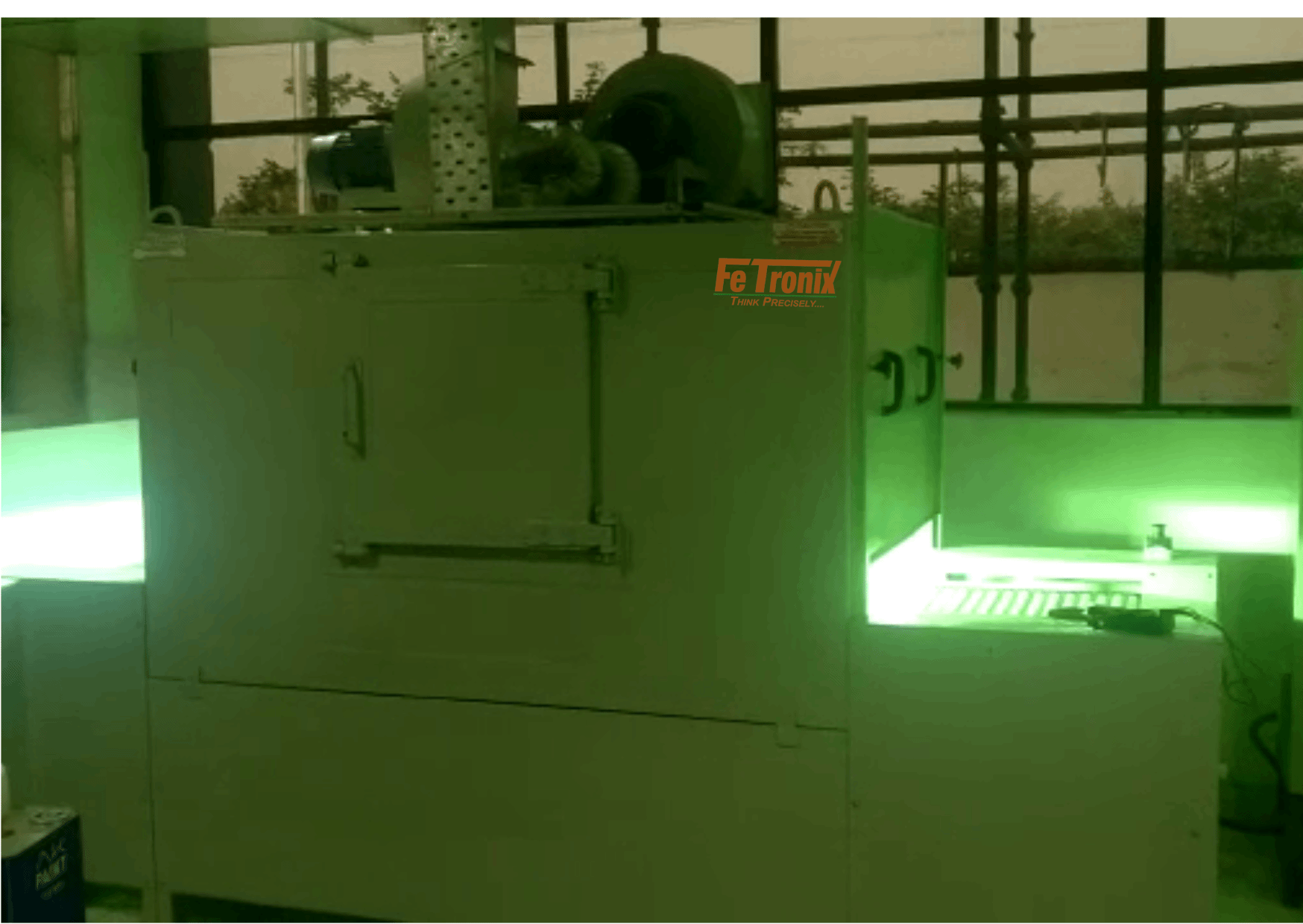
Infrared Oven
The Fetronix industrial infrared oven is a type of oven that utilizes infrared radiation to heat and process materials in industrial applications. Infrared radiation is a form of electromagnetic radiation that transfers heat directly to the surface of an object without relying on convection or conduction. Industrial infrared ovens are commonly used in industries such as automotive, electronics, plastics, textiles, food processing, and more. They offer several advantages over traditional convection ovens, including faster heating times, energy efficiency, precise temperature control, and targeted heating.
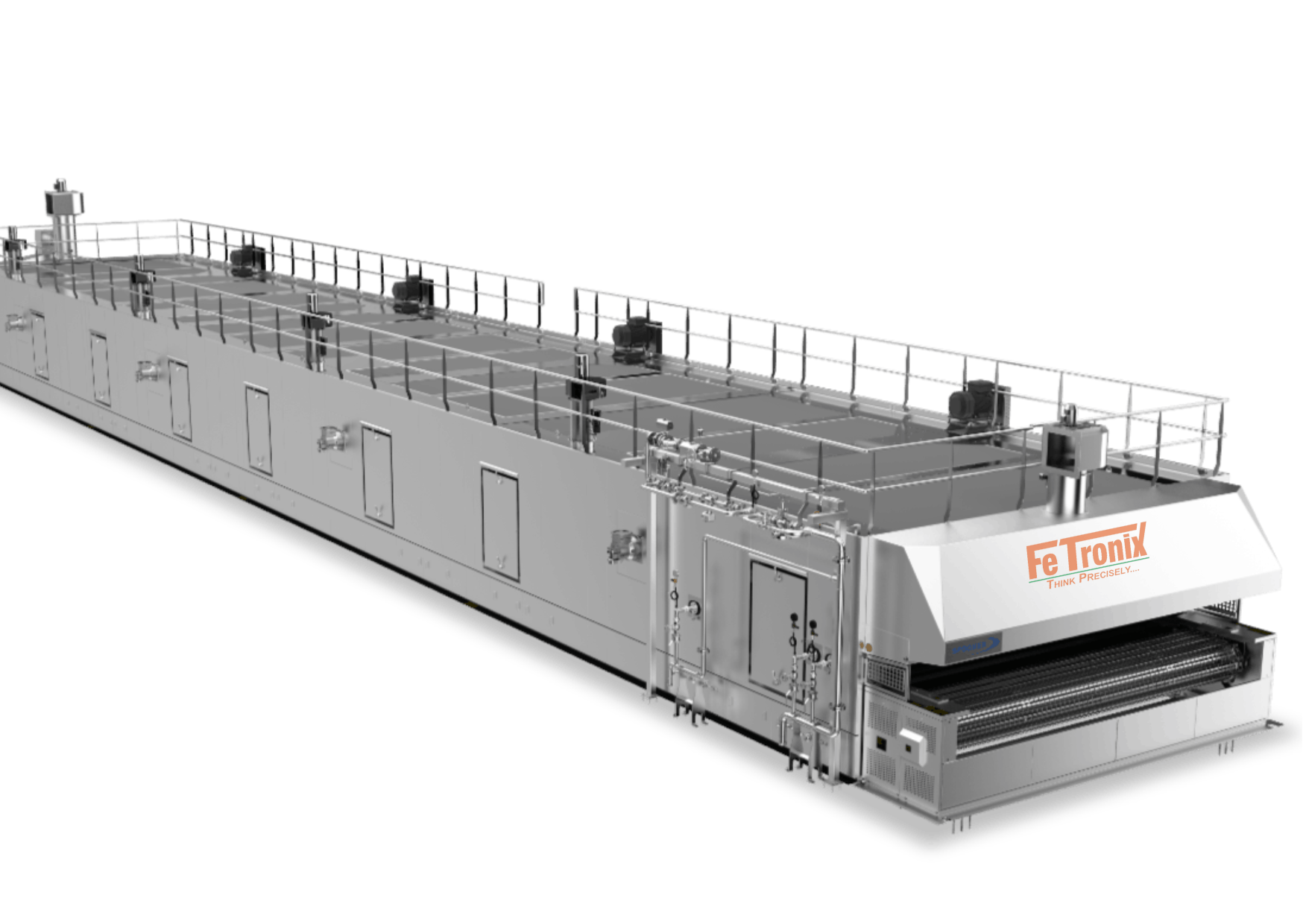
Tunnel Oven
The Fetronix industrial tunnel oven is a specific type of oven commonly used in industrial settings for continuous and automated processing of products. As the name suggests, it resembles a tunnel-like structure with an entry and exit point for the products to pass through on a conveyor belt system.Industrial tunnel ovens are designed to provide consistent and controlled heating across the entire length of the oven. They are commonly used in industries such as food production, baking, automotive, electronics, and more.
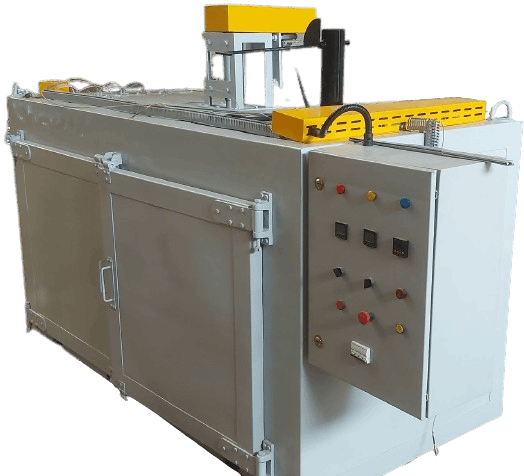
Industrial Electric Oven
The Fetronix industrial electric oven is a type of oven specifically designed for industrial applications that utilizes electric heating elements to generate heat for various processes. These ovens are commonly used in industries such as manufacturing, food processing, pharmaceuticals, ceramics, and more. Industrial electric ovens offer several advantages over other types of ovens, such as gas or steam ovens.
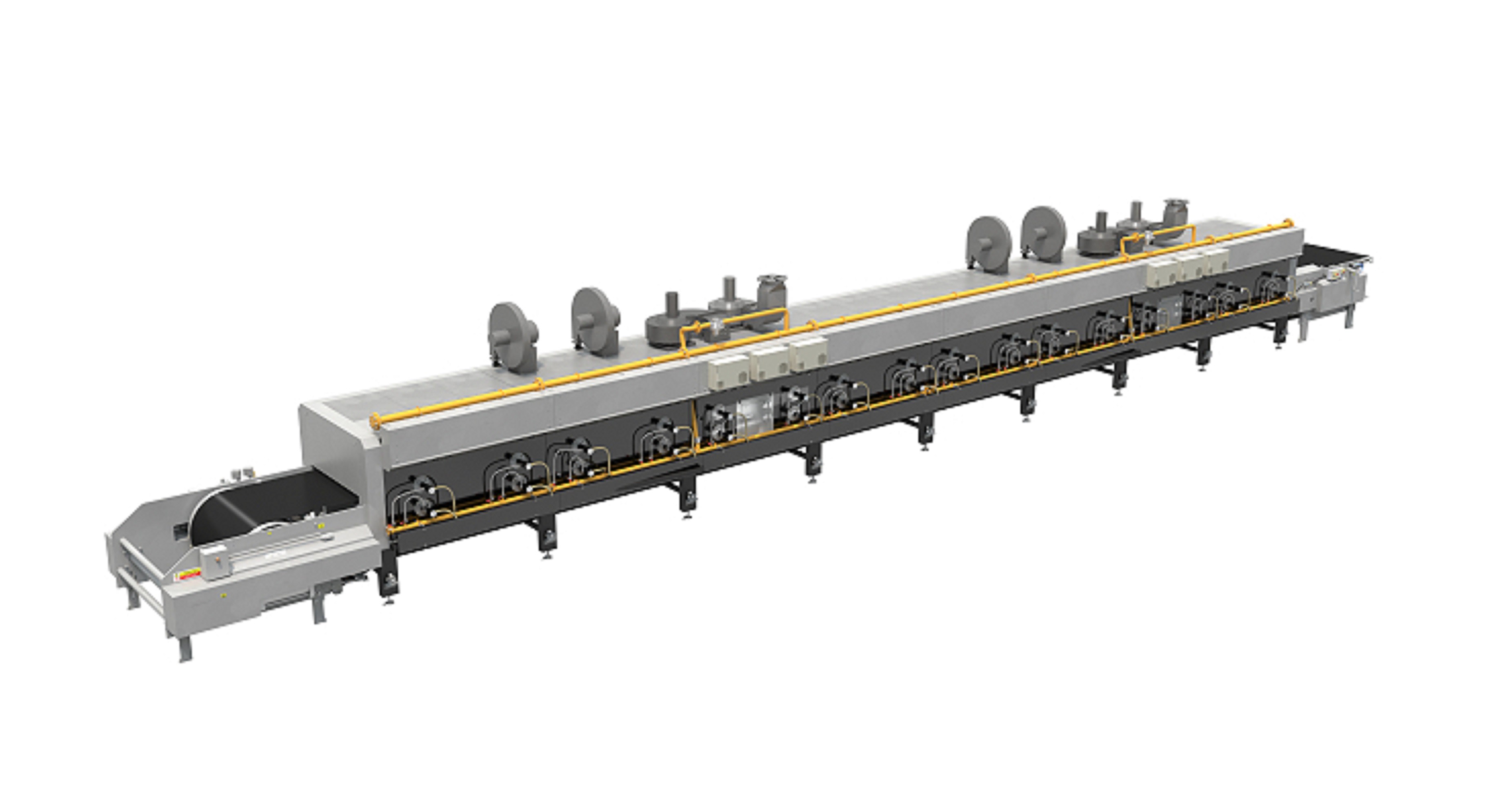
Direct Gas Oven
The Fetronix industrial gas oven is a type of oven commonly used in industrial applications that relies on gas combustion for heat generation. These ovens utilize natural gas or propane as a fuel source to create the necessary heat for various industrial processes such as baking, curing, drying, and more. Industrial gas ovens offer several advantages in terms of performance and efficiency.
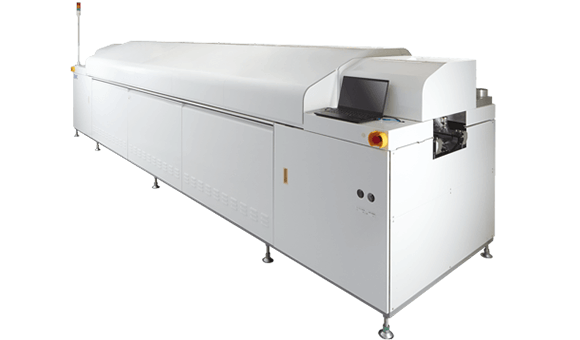
Reflow Oven
The Fetronix reflow oven is a specialized type of oven used in electronics manufacturing processes, specifically for the soldering of surface-mounted components onto printed circuit boards (PCBs). Reflow soldering is a technique that involves heating solder paste, which contains tiny solder balls, to a precise temperature to form solder joints between the components and the PCB. Reflow ovens are designed to provide controlled and consistent heating profiles to achieve optimal soldering results.
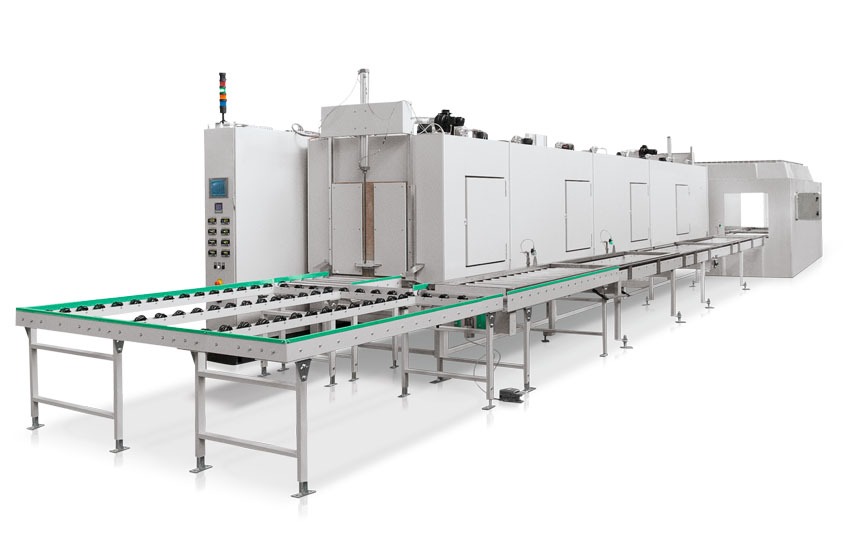
Continuous Oven
The Fetronix continuous oven is a type of industrial oven that is designed for continuous and uninterrupted processing of products or materials. Unlike batch ovens where products are processed in separate batches, continuous ovens allow for a continuous flow of materials through the oven, enabling efficient and high-volume production. Continuous ovens are commonly used in various industries such as food processing, automotive, electronics, textiles, and more. They offer several advantages, including increased productivity, reduced downtime, and improved process efficiency.
PT/WASHING LINE
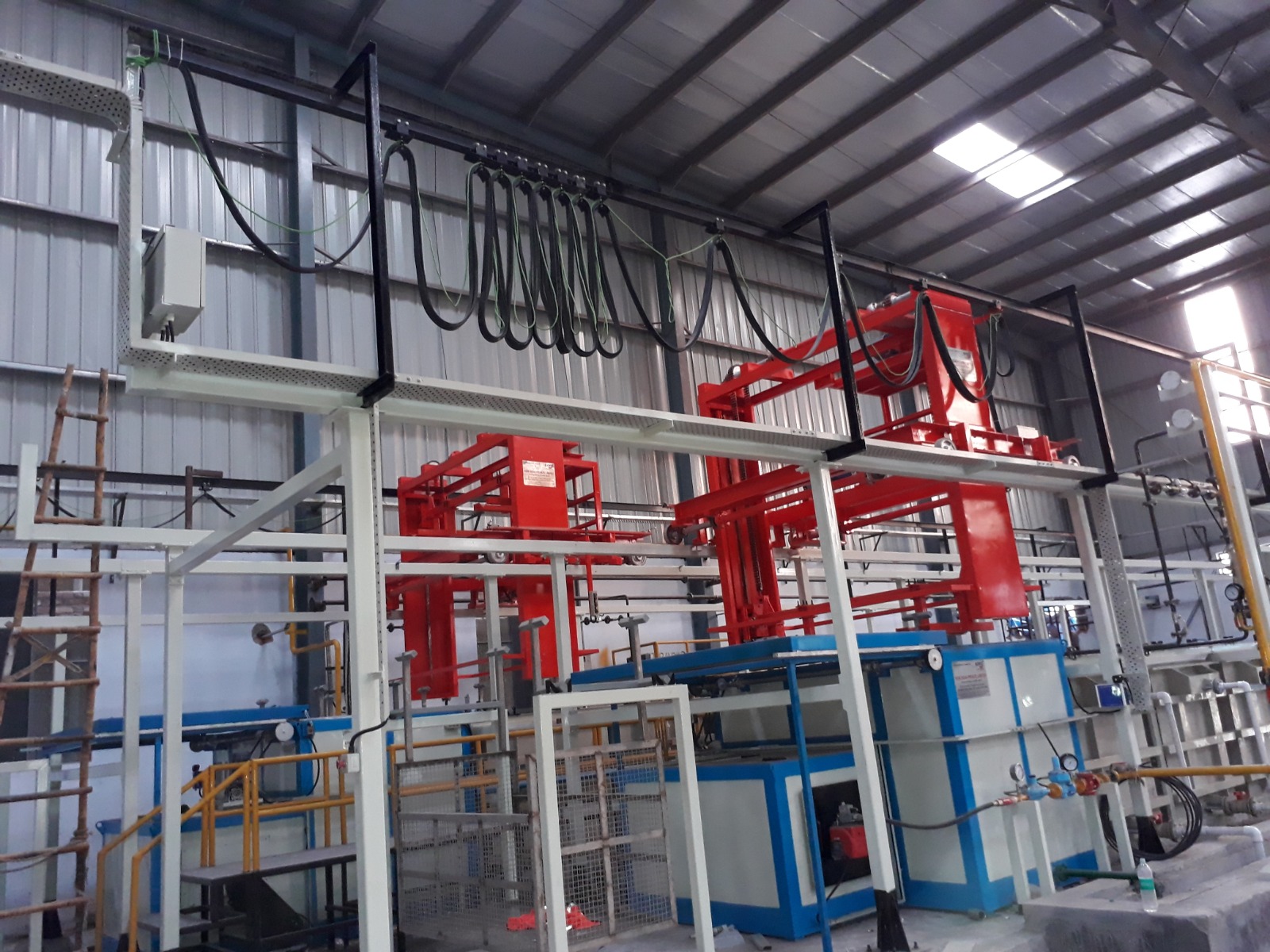
Partner with Fetronix for Your PT/Washing Line Needs
A pre-treatment plant and a washing line are essential components used to
prepare the surfaces of materials, such as metal substrates, before the actual
painting process. These processes ensure proper adhesion of the paint and
improve the overall quality and durability of the painted products. After the pre-treatment and washing processes are completed, the metal parts
are ready for the paint application. Proper pre-treatment and washing
significantly contribute to the longevity and appearance of the painted products
in the paint industry.
Contact us today to discuss your PT/Washing line requirements, and let us
help you find the perfect solution for your business.
Let's explore each of these processes in more detail:
-
Pre-treatment plant in the paint industry:
The pre-treatment plant in the paint industry is responsible for preparing metal
surfaces, commonly found in items like automotive parts, appliances, and metal
furniture, before they are painted. The primary objectives of the pre-treatment
process are to clean the surface, remove contaminants, and create a suitable
surface for paint adhesion. Pre-treatment typically involves the following
stages:
- Degreasing: The first step is to remove any oils, grease, or organic residues from the metal surface. This is crucial because paint will not adhere well to a greasy or oily surface.
- Surface cleaning: After degreasing, the surface is cleaned further to remove any dirt, dust, or remaining impurities. Various methods like water rinsing, solvent cleaning, or alkaline cleaning might be used.
- Etching: This step involves using an acid-based solution to create micro- roughness on the metal surface. The etching process helps in improving the paint adhesion by increasing the surface area and creating a mechanical bond for the paint.
- Conversion coating: A conversion coating, such as phosphate or chromate conversion coating, is often applied to the metal surface. This coating enhances the paint adhesion and provides corrosion resistance.
-
Washing line in the paint industry:
The washing line in the paint industry is a series of equipment and processes
used to wash and rinse the metal parts after pre-treatment. The washing line
ensures that any residues from the pre-treatment process are completely
removed before the paint application. It typically involves the following stages:
- Washing: The metal parts are subjected to a washing process, where they are sprayed with water or cleaning solutions to remove any remaining contaminants or chemicals from the pre-treatment stage.
- Rinsing: After washing, the parts go through one or more rinsing stages to ensure that all cleaning agents are thoroughly washed away. This step is critical to prevent any interference with the paint adhesion.
- Drying: Once the washing and rinsing processes are completed, the metal parts are dried to remove any remaining water or moisture. Drying is essential to create a clean and dry surface for the paint to adhere properly.
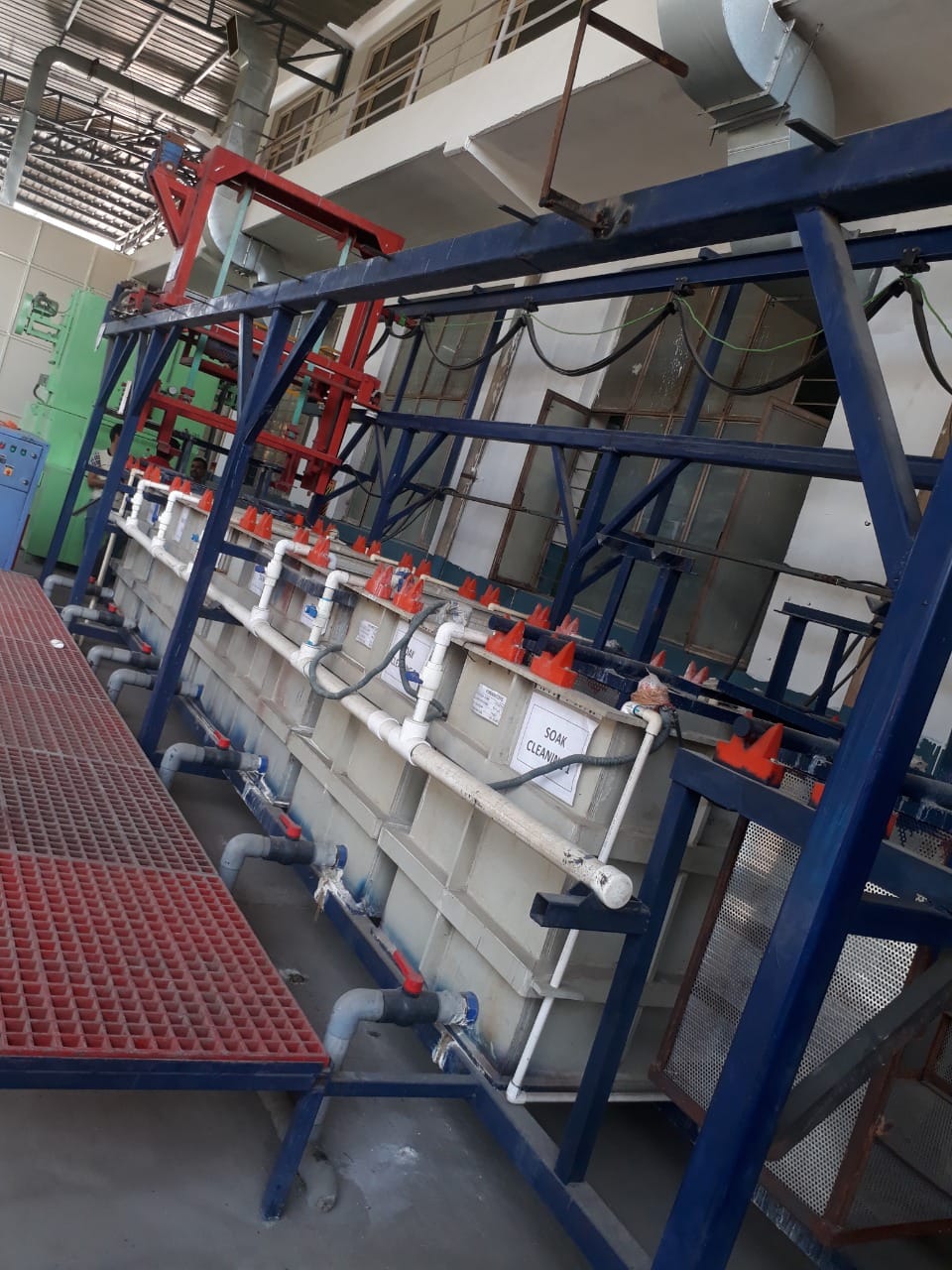
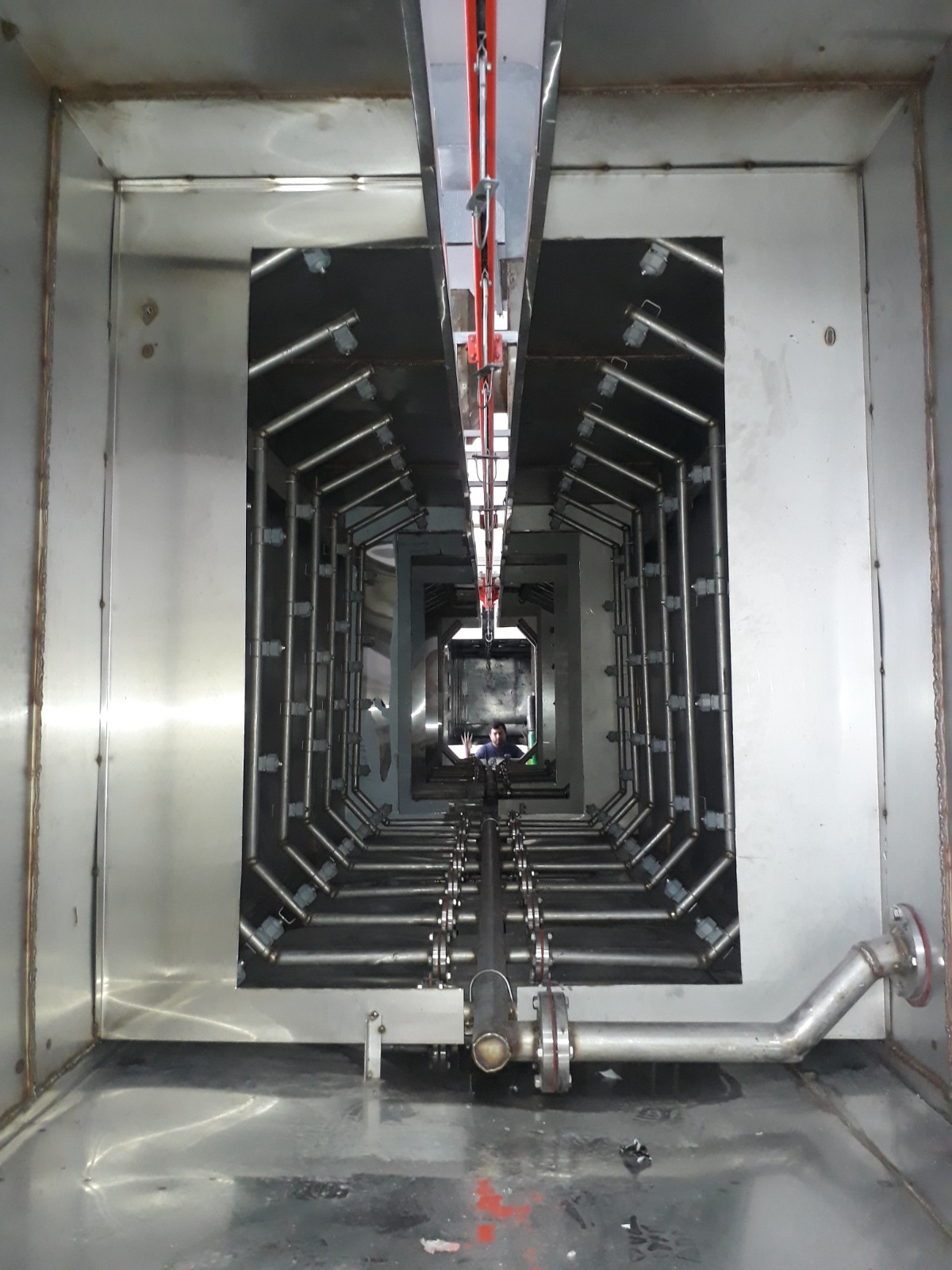
PAINT BOOTH
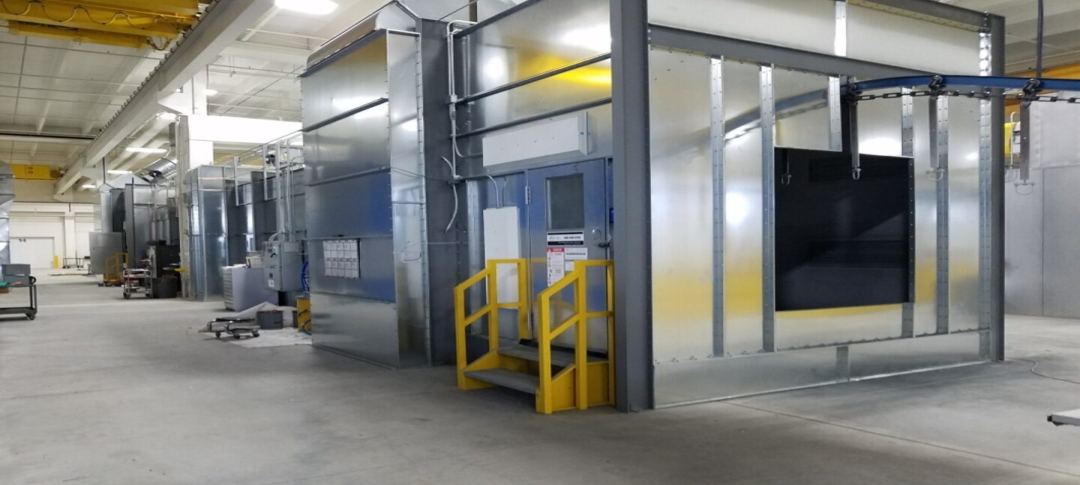
Partner with Fetronix for Your Paint Booth Needs
An industrial paint booth, also known as a spray booth or paint spray booth, is
an enclosed area specifically designed for applying paint or coatings to various
objects or surfaces. These booths provide a controlled environment that helps
contain overspray, prevent contamination, and ensure worker safety. Different
types of industrial paint booths are available to accommodate various
applications and requirements. Here are some common types:
Contact us today to discuss your Paint Booth requirements, and let us
help you find the perfect solution for your business.
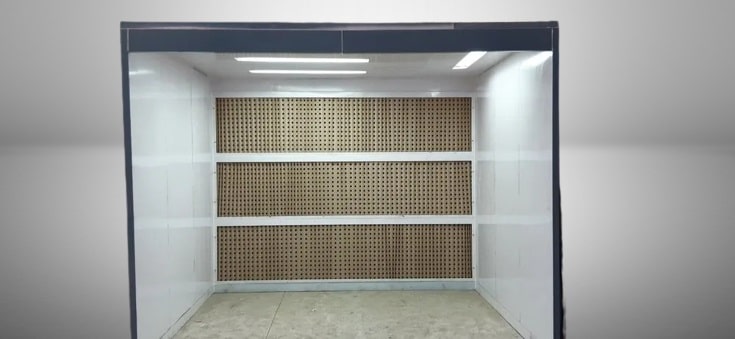
Dry Paint Booth
A dry paint booth, also known as a dry spray booth or dry filter booth, is a type
of paint application system used in various industries for the efficient and
controlled application of paint or coatings to different surfaces. It is designed to
provide a clean and controlled environment for painting processes while
minimizing the release of paint particles into the surrounding atmosphere.
-min.jpg)
Liquid/Wet Type Paint Booth
A liquid or wet type paint booth, also known as a wet spray booth or water wash booth, is a type of paint application system used in various industries for the application of liquid-based paints or coatings onto different surfaces. It is designed to control overspray and capture paint particles by utilizing water as the primary filtration medium.
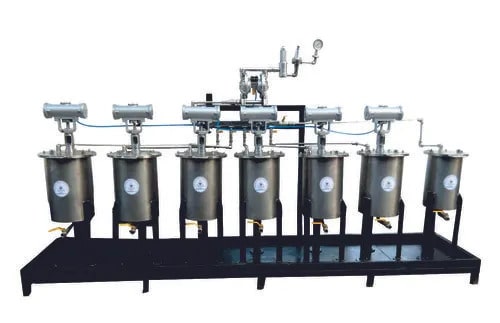
Powder Coating Paint Booth
A powder coating booth is a specialized enclosure or booth used in the powder coating process. Powder coating is a finishing technique where a dry powder is electrostatically applied to a surface and then cured under heat to create a durable and protective coating.The powder coating booth is designed to provide a controlled environment for the application of the powder coating. Powder coating booths are used in various industries, including automotive, aerospace, appliance manufacturing, and general manufacturing, where durable and high-quality finishes are required. They provide a controlled environment for the powder coating process, ensuring efficient application, minimal waste, and improved worker safety.

Adhesive Coating Plant
An adhesive coating plant, also known as an adhesive coating facility or adhesive application plant, is a specialized manufacturing facility that is specifically designed for the production of adhesive-coated products. It is a dedicated production line or facility where adhesive coatings are applied to various substrates or materials in a controlled and efficient manner. Adhesive coating plants are used in a wide range of industries such as packaging, labeling, automotive, electronics, construction, and healthcare. They enable efficient and controlled application of adhesive coatings, ensuring consistent and high-quality bonding solutions for various applications.
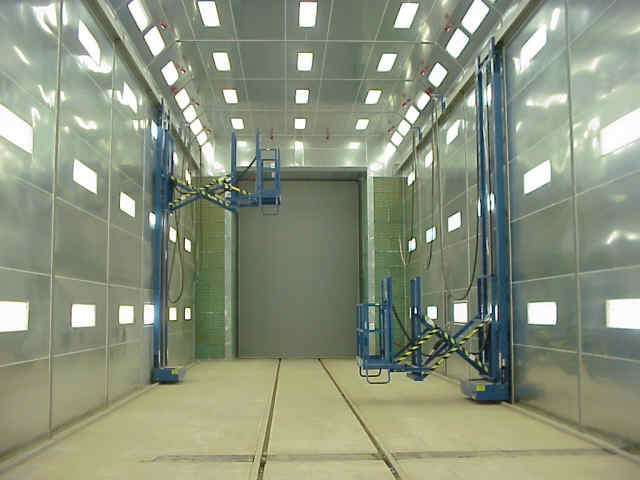
Clean Room
A clean room refers to a controlled environment specifically designed to
minimize the presence of airborne particles, dust, and contaminants during the
painting process. Clean rooms are used in industries where high-quality finishes
and strict cleanliness standards are required, such as automotive, aerospace,
electronics, and other manufacturing sectors.
The clean room typically has the following features: Air Filtration System, Controlled Airflow, Positive Pressure, Protective Clothing, Cleaning Procedures.
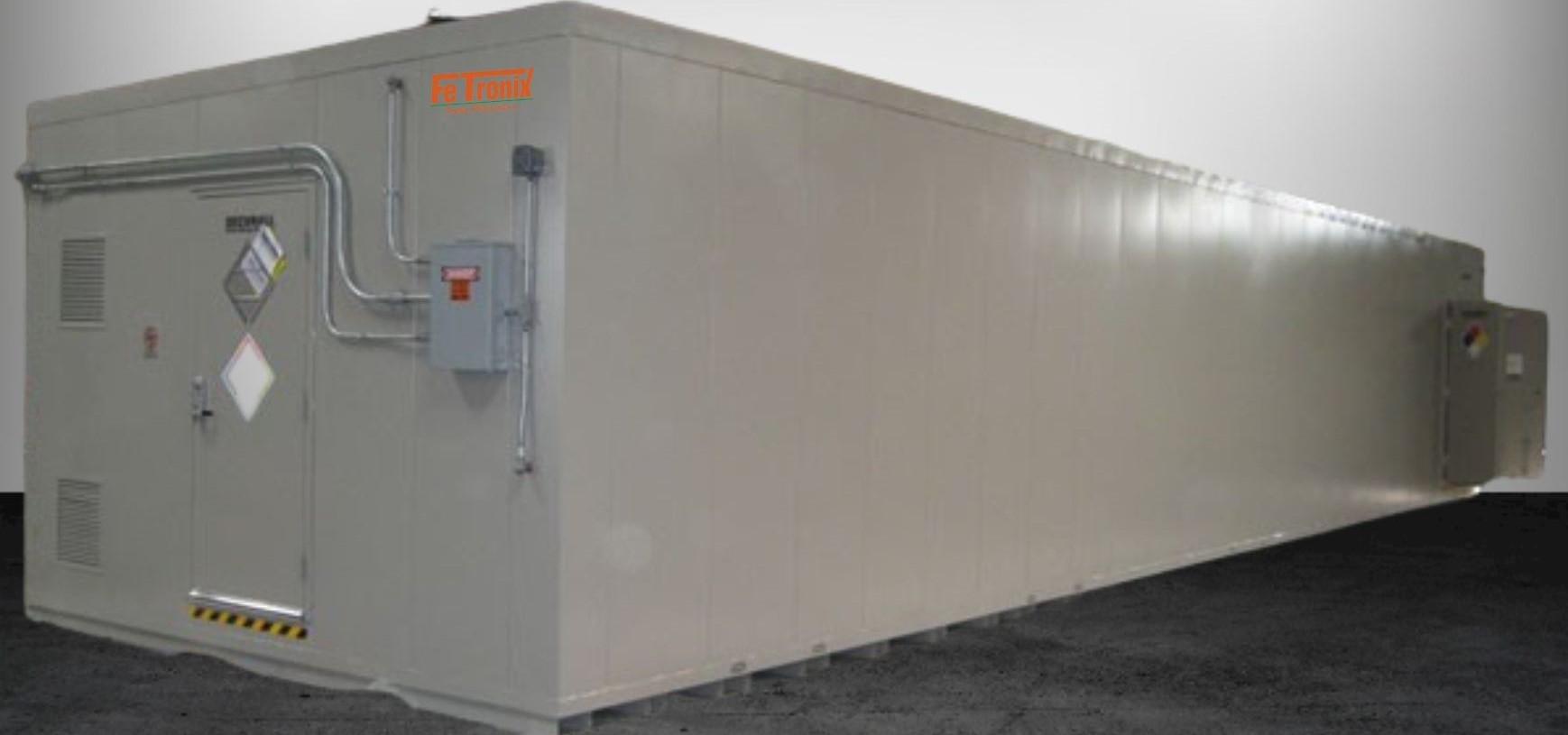
Paint Kitchen
Fetronix paint mix room and kitchen is a controlled area to safely mix paints. An industrial paint kitchen is a specialized facility within manufacturing plants or industries that produce large quantities of painted products. It serves as a central hub for the preparation, mixing, storage, and dispensing of paints and coatings used in various applications, such as automotive, aerospace, appliances, furniture, and more.
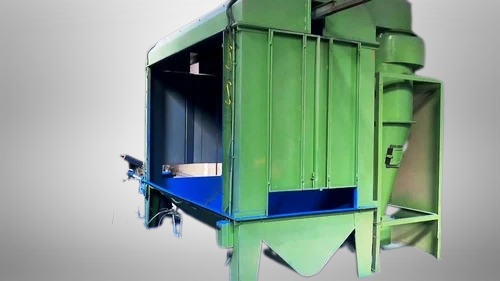
Powder Coating Booth
A powder coating booth is a specialized enclosure or booth used in the powder coating process. Powder coating is a finishing technique where a dry powder is electrostatically applied to a surface and then cured under heat to create a durable and protective coating.The powder coating booth is designed to provide a controlled environment for the application of the powder coating.
Paint Incinerator
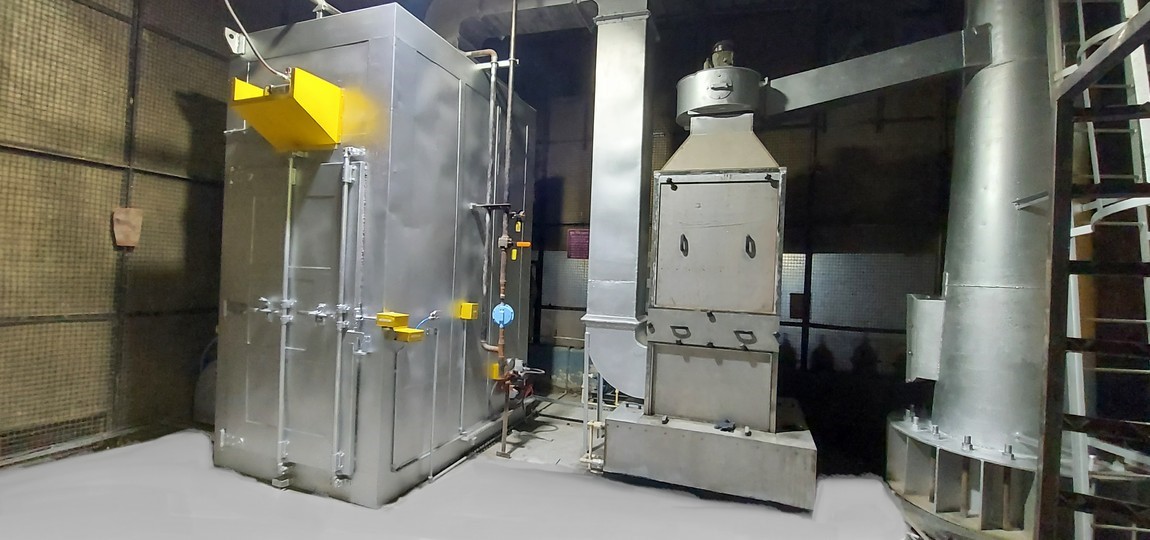
Fetronix - Your Trusted Partner in Paint Incinerator Manufacturing
A paint incinerator, also known as a paint waste incinerator or paint sludge
incinerator, is a specialized type of industrial furnace designed to safely and
efficiently dispose of paint waste and related materials. Paint waste can include
paint sludge, paint overspray, solvent-contaminated rags, empty paint
containers, and other paint-related residues generated during painting processes
or paint manufacturing.
Contact us today to discuss your needs and let our team assist you in finding the perfect solution.
Paint incinerators are equipped with advanced technologies to ensure that the
paint waste is burned at high temperatures, which helps to break down the
complex organic compounds found in paint and other coatings. This high-
temperature combustion process is known as incineration.
The key features of paint incinerators include:
- High-temperature combustion: Paint incinerators operate at temperatures typically ranging from 800 to 1200 degrees Celsius (1472 to 2192 degrees Fahrenheit) or higher. These high temperatures help ensure the complete destruction of hazardous organic components in the paint waste, converting them into less harmful byproducts.
- Air pollution control: To meet environmental regulations and minimize air pollution, modern paint incinerators are equipped with advanced air pollution control systems. These systems capture and treat harmful emissions, such as particulate matter, volatile organic compounds (VOCs), and other air pollutants before they are released into the atmosphere.
- Continuous monitoring and safety systems: Paint incinerators are equipped with sophisticated monitoring and control systems to ensure safe and efficient operation. These systems constantly monitor parameters such as temperature, oxygen levels, and combustion efficiency to maintain optimal conditions for waste combustion.
- Ash handling and residue management: After the paint waste is incinerated, the remaining ash and residues are collected and handled appropriately. In some cases, the ash may need to be disposed of as hazardous waste, depending on the characteristics of the original paint waste.
- Compliance with regulations: Paint incinerators must comply with stringent environmental regulations and emission standards to protect human health and the environment. Proper permitting and regular inspections are required to operate these facilities legally.
It's worth noting that while paint incineration can be an effective method for managing paint waste, it is generally considered a last resort for waste disposal. Efforts should be made to reduce paint waste generation, reuse materials where possible, and recycle whenever feasible. Proper handling, storage, and disposal of paint waste are crucial to prevent environmental contamination and ensure the safety of workers and the public.
SPM (SPECIFIED / SINGLE PURPOSE MACHINE)
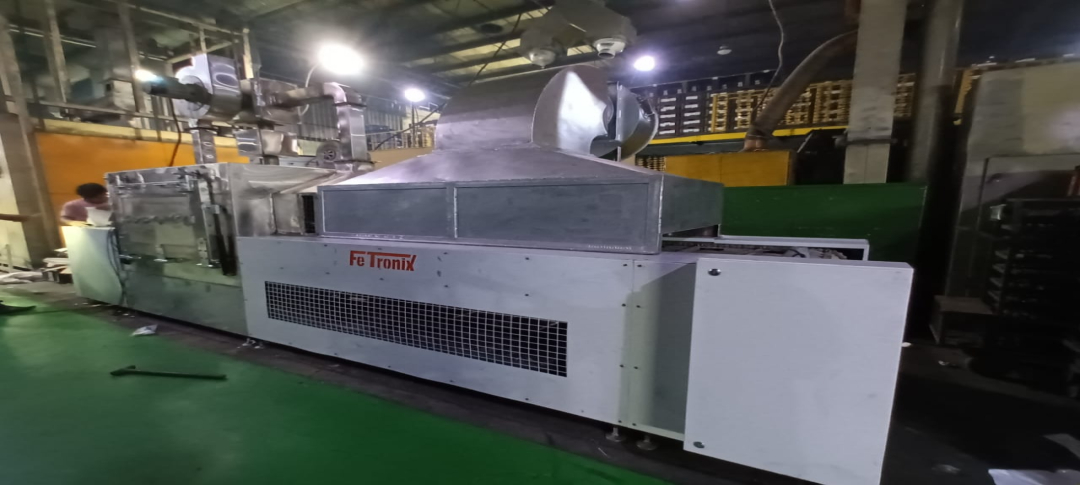
It is designed to process single or specific task. A fully automatic control system to perform the repeatability with efficiency.
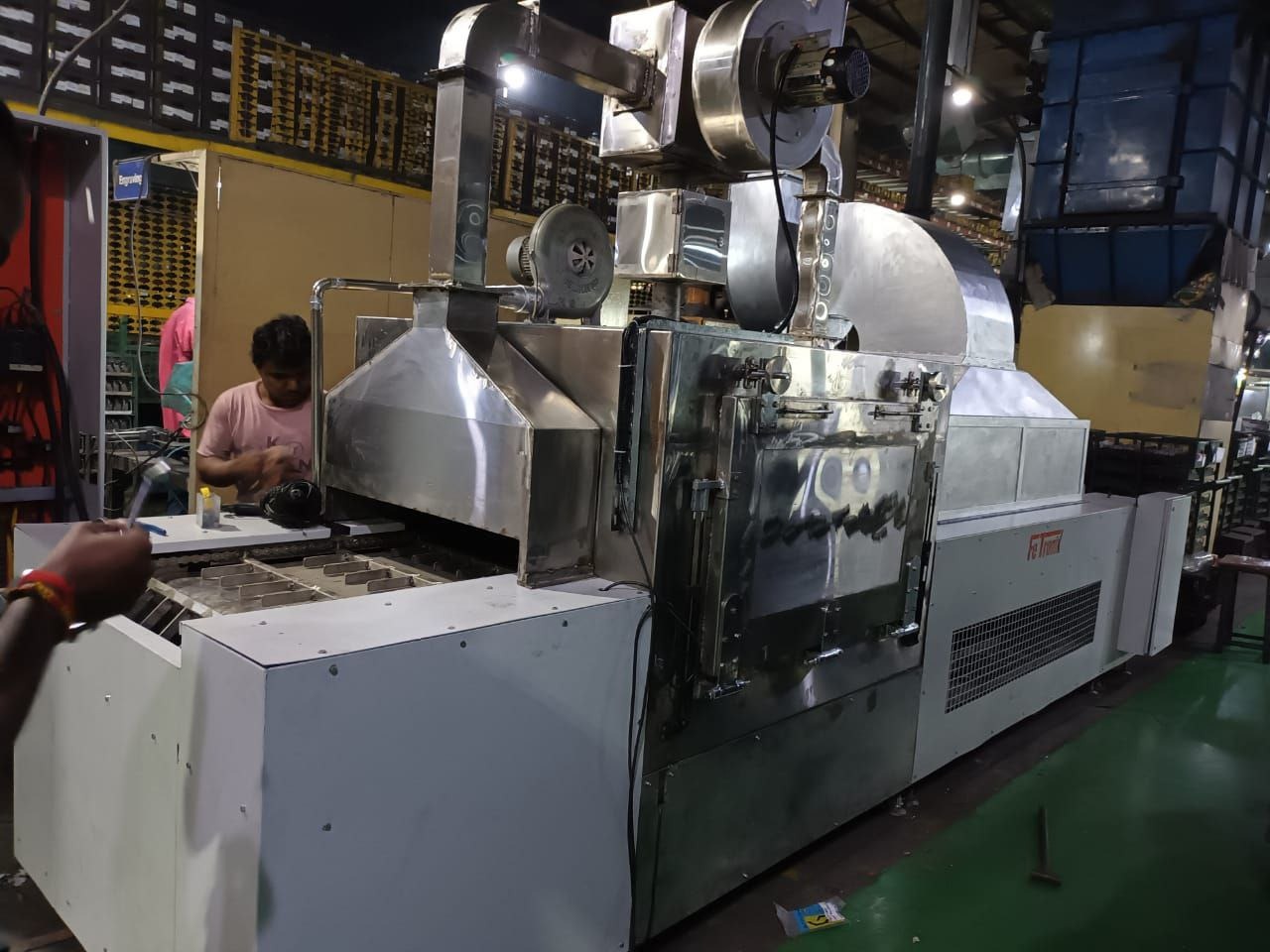
Scorching Machine
A scorching machine, also known as a heat setting machine or heat press machine, is a device used to apply controlled heat and pressure to various materials to achieve specific outcomes. The machine is commonly used in the textile and printing industries, as well as for other heat-related applications. The primary purpose of a scorching machine is to permanently set colors, fix dyes, or enhance the properties of materials through heat treatment.
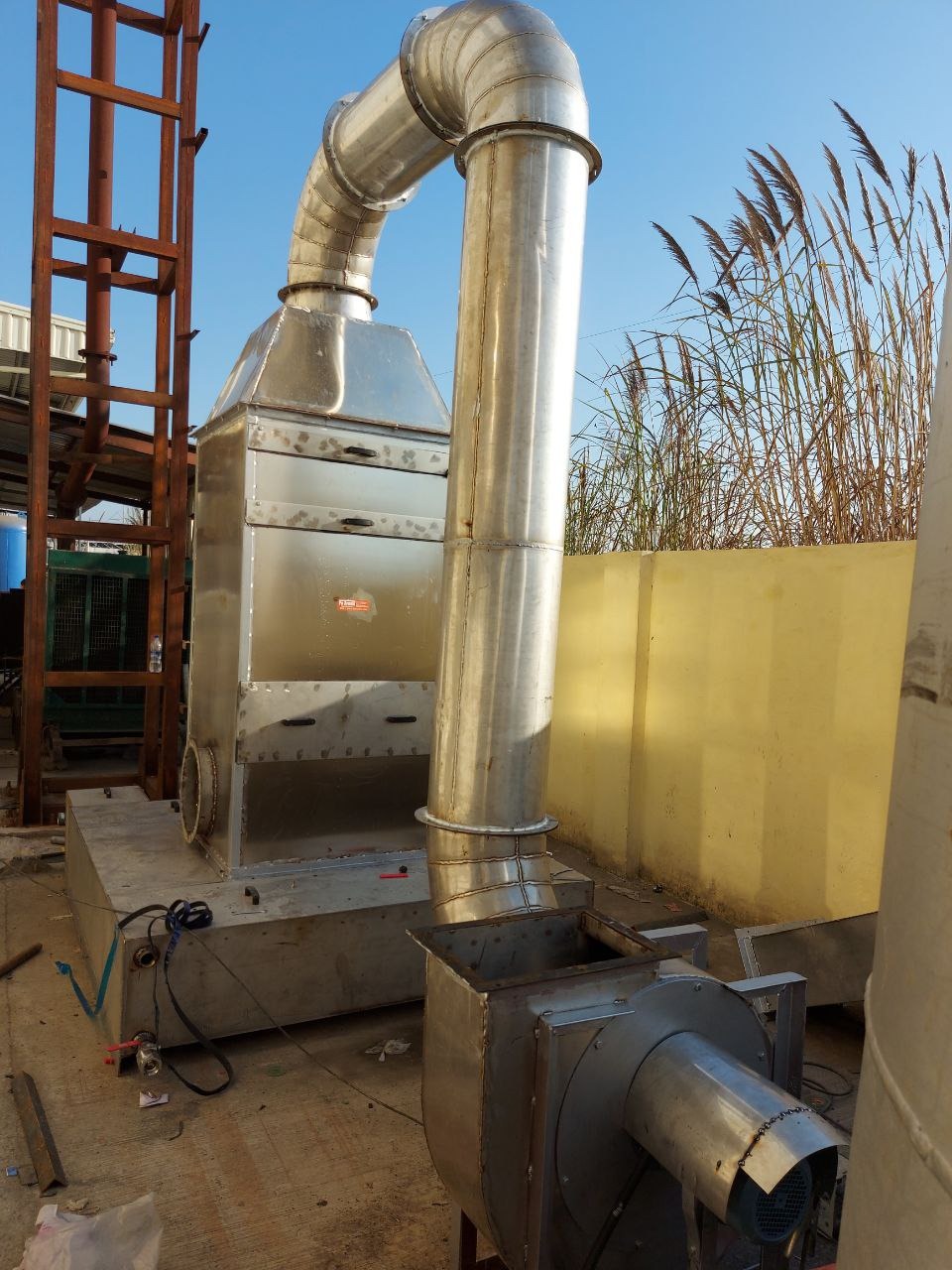
Scrubber
A scrubber machine, also known as an air pollution control scrubber or simply a scrubber, is a device used to remove particulate matter, gases, and other pollutants from industrial exhaust gases before they are released into the atmosphere through a chimney or stack. Scrubber machines are a critical component of air pollution control systems in various industries to reduce emissions and comply with environmental regulations.
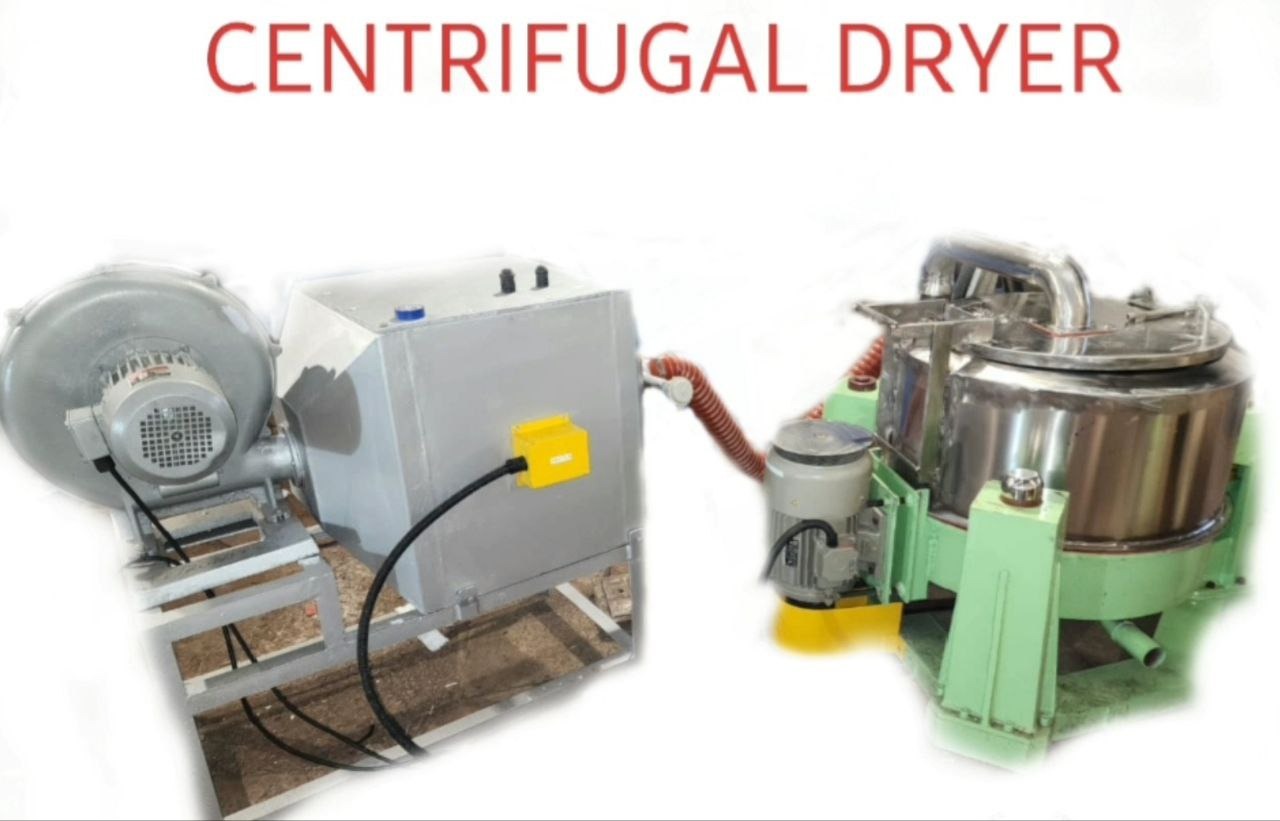
Centrifugal Dryer
A centrifugal dryer, also known as a spin dryer or centrifuge dryer, is a specialized piece of equipment used in manufacturing companies and various industrial settings to remove excess moisture or liquids from materials or products. It operates on the principle of centrifugal force to quickly and efficiently separate liquids from solids. Centrifugal dryers are widely used in industries such as textiles, plastics, food processing, and metalworking, among others.
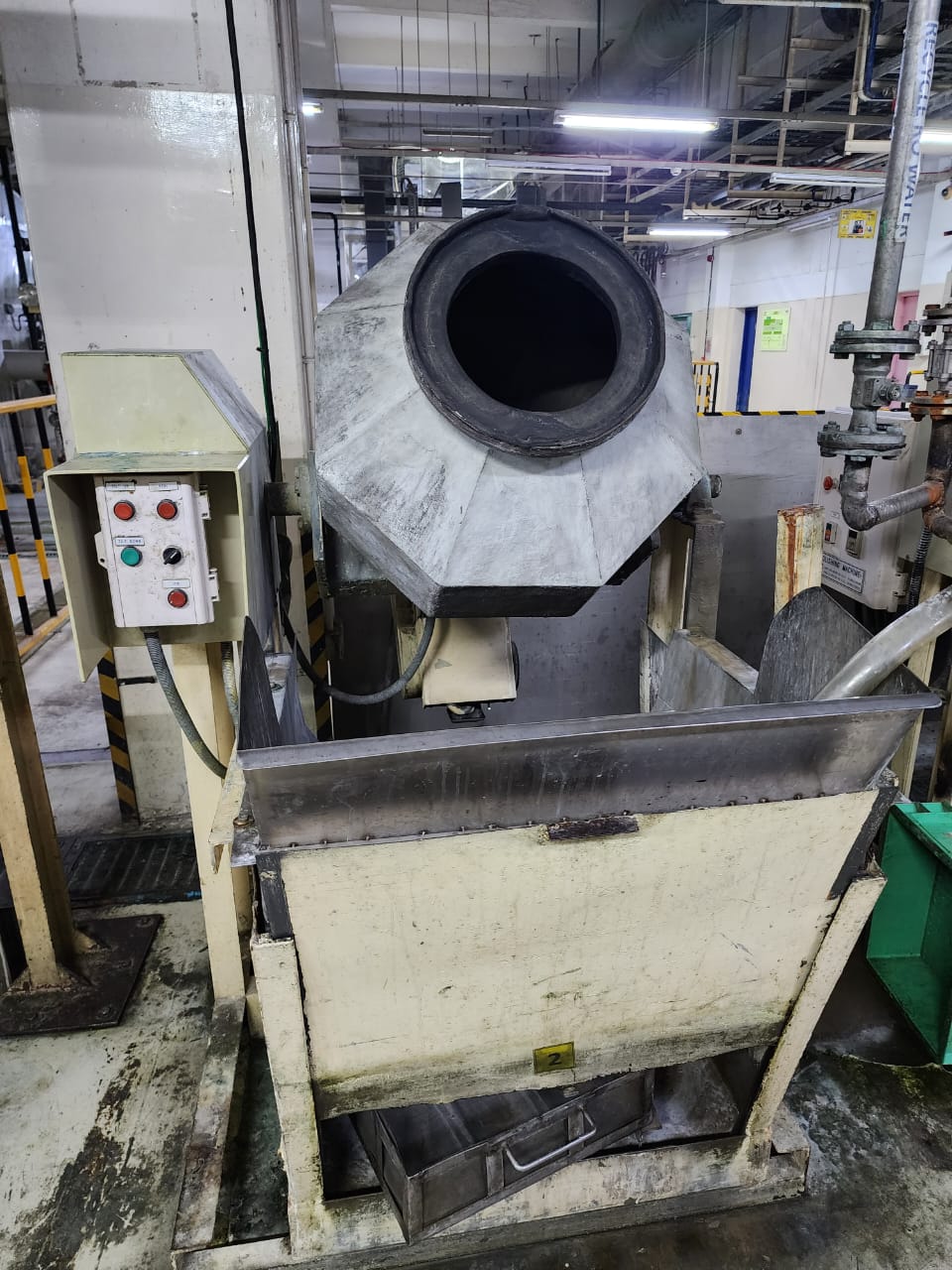
Tumbler
Fetronix industrial tumbler, also known as a rotary tumbler or barrel tumbler, is a mechanical device used for polishing, deburring, and finishing various types of materials in bulk. It consists of a large rotating drum or barrel that tumbles the items inside, subjecting them to friction and abrasion with media to achieve the desired surface finish.